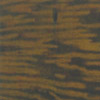 ANGELIM AMARGOSO
ANGELIM AMARGOSO
NOME CIENTÍFICO
Vatairea guianensis
OUTROS NOMES POPULARES
Amargoso, andira-da-várzea, angelim-amargoso, fava, fava-amarela, fava-amargosa, fava-bolacha, fava-do-baixio, fava-grande, fava-grande-do-igapó, faveira, faveira-amarela, faveira-amargosa, faveira-de-impigem, faveira-do-baixio, faveira-do-igapó, faveira-grande-do-igapó, faveiro, lombrigueira, sucupira, sucupira-amarela.
CARACTERÍSTICAS GERAIS
Cerne e alburno distintos pela cor, cerne castanho-amarelado ou castanho-avermelhado;
Com aspeto fibroso;
Cheiro impercetível;
Gosto amargo;
Densidade alta;
Grã direita a irregular;
Textura grossa.
TRABALHABILIDADE
Madeira média-leve e aceita prego.
USOS
CONSTRUÇÃO CIVIL
Pesada externa: Dormentes ferroviários, cruzetas, estacas
Pesada interna: Caibros, vigas
Leve interna, estrutural: Ripas
MOBILIÁRIO
Alta qualidade: Partes decorativas de móveis
OUTROS USOS: Decoração e adorno, lâminas decorativas, embarcações (quilhas, convés, costados e cavernas), embalagens, cabos de ferramentas.
BOTANICAL NAME
Vatairea guianensis
OTHER NAMES
Amargoso, andira da várzea (floodplains), angelim-amargoso, fava, fava-amarela (yellow), fava-amargosa, fava-bolacha, fava-do-baixio, fava-grande, fava-grande-do-igapó, faveira, faveira-amarela (yellow), faveira-amargosa, faveira-de-impigem, faveira-do-baixio, faveira-do-igapó, faveira-grande-do-igapó, faveiro, lombrigueira, sucupira, sucupira-amarela.
GENERAL CHARACTERISTICS
Heartwood and sapwood distinct in color, yeloowish-brown or reddish-brown heartwood;
With fibrous appearance;
Imperceptible odor;
Bitter taste;
High density;
Grain straight to irregular;
Rough texture.
WORKING PROPERTIES
Medium-light wood and accepted nail.
USES
CONSTRUCTION
External heavy: Railway crossties, crossarms, piling
Internal heavy: Rafters, beams
Structural, light interior: Laths
FURNITURE
High quality: Decorative furniture pieces
OTHER USES: Decoration and adornment, veneer, boatbuildings (keels, decks, topsides and caves), packaging, tool handles.
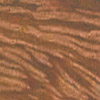 ANGELIM COCO
ANGELIM COCO
NOME CIENTÍFICO
Andira sp.
OUTROS NOMES POPULARES
Angelim-tinto
CARACTERÍSTICAS GERAIS
Cerne/alburno: distintos;
Espessura do alburno: 3,0 cm a 7,5 cm;
Cor do cerne: marron-avermelhado (5YR 5/4);
Cor do alburno: marrom-muito-pálido (10YR 7/4);
Camadas de crescimento: distintas;
Grã: revessa;
Textura: grossa;
Figura tangencial: em forma de `U´, causada pelas camadas de crescimento - e de aspeto fibroso acentuado, causado pelo destaque do parênquima axial das linhas vasculares e das fibras
Figura radial: de aspeto fibroso atenuado, causado pelo destaque do parênquima axial, das linhas vasculares e das fibras – e em faixas longitudinais destacadas, causadas pelas camadas de crescimento;
Brilho: ausente;
Cheiro: impercetível;
Resistência ao corte manual: dura.
TRABALHABILIDADE
Madeira média-leve e aceita prego.
USOS
CONSTRUÇÃO CIVIL
Pesada interna: Vigas, caibros
Leve em esquadrias: Portas, janelas, caixilhos
Leve interna, decorativa: Forros, lambris
Leve interna, estrutural: Partes secundárias de estruturas, ripas
Uso temporário: Pontaletes, andaimes, formas para concreto
MOBILIÁRIO
Utilidade geral: Móveis estândar
OUTROS USOS: Cabos para cutelaria, lâminas decorativas.
BOTANICAL NAME
Andira sp.
OTHER NAMES
Angelim-tinto (red)
GENERAL CHARACTERISTICS
Heartwood/sapwood: distinct;
Sapwood thickness: 3,0 cm to 7,5 cm;
Heartwood color: reddish brown (5YR 5/4);
Sapwood color: brown very pale (10YR 7/4);
Growth rings: distints;
Grain: interlocked;
Texture: thick;
Tangential figure: in the form of `U´, caused by growth of layers - and pronounced fibrous appearance caused by prominent axial parenchyma, vascular lines and fibers;
Radial figure: attenuated fibrous appearance caused by prominent axial parenchyma, vascular lines and fiber - and longitudinal bands highlighted, caused by growth layers;
Brightness: absent;
Smell: imperceptible;
Resistance to the manual cut: hard.
WORKING PROPERTIES
Medium-light wood and accepted nail.
USES
CONSTRUCTION
Internal heavy: Beams, rafters
Framework: Doors, windows, frames
Internal light, decorative: Ceilings, wall panelling
Light interior, structural: Secondary parts of structures, laths
Temporary use: Posts and braces, scaffolding, concrete forms
FURNITURE
General utility: Standard furniture
OTHER USES: Cutlery cables, decorative veneer.
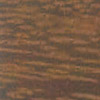 ANGELIM FERRO
ANGELIM FERRO
NOME CIENTÍFICO
Vatairea paraensis
OUTROS NOMES POPULARES
Amargoso, angelim-amargoso, fava-amarela, fava-amargosa, fava-bolacha, fava-dura, faveira, faveira-amarela, faveira-amargosa, faveira-bolacha, faveira-sapupira-amarela, sapupira-amarela.
CARACTERÍSTICAS GERAIS
Cerne/alburno: distintos;
Espessura do alburno: 4,0 cm a 7,0 cm;
Cor do cerne: marron-avermelhado (5YR 4/3) com listras amarelo-amarronzado (10YR 6/6);
Cor do alburno: marrom-muito-pálido (10YR 7/4);
Anéis de crescimento: indistintos
Grã: cruzada revessa;
Textura: média a grossa;
Figura tangencial: de aspeto fibroso atenuado, causado por destaque de parênquima axial e linhas vasculares;
Figura radial: de aspeto fibroso atenuado, causado pelo destaque de parênquima axial e linhas vasculares;
Brilho: ausente;
Cheiro: fraco e agradável;
Resistência ao transversal manual: dura.
TRABALHABILIDADE
Madeira média-leve e aceita prego.
USOS
CONSTRUÇÃO CIVIL
Pesada interna: Dormentes ferroviários, cruzetas, estacas.
Pesada interna: Caibros, vigas
Leve interna, estrutural: Ripas
MOBILIÁRIO
Alta qualidade: Partes decorativas de móveis
OUTROS USOS: Decoração e adorno, lâminas decorativas, embarcações (quilhas, convés costados e cavernas), embalagens, cabos de ferramentas.
BOTANICAL NAME
Vatairea paraensis
OTHER NAMES
Amargoso, angelim-amargoso, fava-amarela, fava-amargosa, fava-bolacha, fava-dura, faveira, faveira-amarela, faveira-amargosa, faveira-bolacha, faveira-sapupira-amarela, sapupira-amarela.
GENERAL CHARACTERISTICS
Heartwood/sapwood: distinct;
Sapwood thickness: 4,0 cm to 7,0 cm;
Heartwood color: reddish brown (5YR 4/3) with yellow-brown stripes (10YR 6/6);
Sapwood color: very pale brown (10YR 7/4);
Growth rings: indistints;
Grain: interlocked;
Texture: medium to coarse;
Tangential figure: attenuated fibrous appearance caused by prominent axial parenchyma and vascular lines;
Radial figure: attenuated fibrous appearance caused by prominent axial parenchyma and vascular lines;
Brightness: absent;
Smell: weak and pleasant;
Resistance to the manual cut: hard.
WORKING PROPERTIES
Medium-light wood and accepted nail.
USES
CONSTRUCTION
External heavy: Railway crossties, crossarms, piling
Internal heavy: Rafters, beams
Internal light, structural: Laths
FURNITURE
High quality: Decorative furniture pieces
OTHER USES: Decoration and adornment, decorative veneer, boatbuildings (keels, decks, topsides and caves), packaging, tool handles.
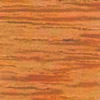 ANGELIM PEDRA
ANGELIM PEDRA
NOME CIENTÍFICO
Hymenolobium pulcherrimum
OUTROS NOMES POPULARES
Angelim, angelim-amarelo, angelim-da-mata, angelim-do-pará, angelim-macho, mirarema.
NOMES INTERNACIONAIS
Angelim-pedra (Espanha; Estados Unidos; França; Grã Bretanha; Itália), erejoerde, lialiadan koleroe, saandoe (Suriname), sapupira amarela, St. Martin Gris (Guiana Francesa).
CARACTERÍSTICAS GERAIS
Cerne e alburno distintos pela cor, cerne castanho-avermelhado claro ou escuro, com manchas castanhas mais escuras devido à exsudação de óleo-resina, alburno castanho-pálido;
Brilho ausente;
Cheiro e gosto impercetíveis;
Densidade média;
Dura ao corte;
Grã direita a revessa;
Textura grossa, aspeto fibroso.
DURABILIDADE NATURAL
Madeira durável a muito durável em relação a fungos apodrecedores;
Moderadamente resistente a brocas marinhas e resistente a cupins-de-madeira-seca.
TRABALHABILIDADE
A madeira de angelim-pedra é fácil de ser trabalhada. Acabamento de regular a bom na plaina, torno e broca. É moderadamente fácil de serrar e aplainar; é fácil de pregar, parafusar e permite acabamento satisfatório.
USOS
CONSTRUÇÃO CIVIL
Pesada interna: Vigas, caibros
Leve em esquadrias: Portas, janelas, caixilhos
Leve interna, decorativa: Forros, lambris
Leve interna, estrutural: Partes secundárias de estruturas, ripas
Uso temporário: Pontaletes, andaimes, fôrmas para concreto
MOBILIÁRIO
Utilidade geral: Móveis estândar
OUTROS USOS: Cabos para cutelaria, lâminas decorativas
BOTANICAL NAME
Hymenolobium pulcherrimum
OTHER NAMES
Angelim, angelim-amarelo (yellow), angelim-da-mata (jungle), angelim-do-pará, angelim-macho, mirarema.
INTERNATIONAL NAMES
Angelim-pedra (Spain; USA; France; UK; Italy), erejoerde, lialiadan koleroe, saandoe (Suriname), sapupira amarela, St. Martin Gris (Guiana French).
GENERAL CHARACTERISTICS
Heartwood and sapwood distinct in color, light or dark reddish brown heartwood, with darker stains due to oil-resin exudates, pale brown sapwood;
Luster absent;
Smell and taste unnoticeable;
Medium density;
Hard to cut;
Grain straight to interlocked;
Rough texture, fibrous aspect.
NATURAL DURABILITY
Durable to very durable to decay fungi attak;
Moderately resistant to marine borers and resistant to the attack of dry-wood-termites.
WORKING PROPERTIES
Angelim-pedra wood is easily machined. Regular to good results from the planing, turning and boring operations. Moderately easy to saw and plane; easy to nail, screw and yelds a very satisfactory finishing.
USES
CONSTRUCTION
Internal heavy: Beans, rafters
Framework: Doors, windows, frames
Internal light, decorative: Ceilings, wall panelling
Internal light, structural: Secondary parts of structures, laths
Temporary use: Posts and braces, scaffolding, concrete forms
FURNITURE
General utility: Standard furniture
OTHER USES: Cutlery handls, decorative veneers
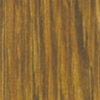 BACURI
BACURI
NOME CIENTÍFICO
Platonia insignis Mart., Guttiferae
OUTROS NOMES POPULARES
Bacori, bacuri-aço, bacuri-amarelo, bacuri-grande, bacuriba, bacuriúba, bulandim, ibacopari, ibacori, landirana, pacori, pacuri, pacuriuva, pacuru.
NOMES INTERNACIONAIS
Bacuri manil (Guiana Francesa), bacury, geelhart, matazona (Equador), pakoeli, pakoelie of geelhart, pakoelie of ger'ati (Suriname), pakoori, pakuri, parcori, parcouri, parcouri jaune, parcouri soufre, wild mamme aple (Guiana).
CARACTERÍSTICAS GERAIS
Cerne e alburno distintos pela cor, cerne amarelo-escuro, alburno branco-escuro;
Brilho moderado;
Cheiro e gosto impercetíveis;
Densidade alta;
Dura ao corte;
Grã direita;
Textura grossa, aspeto fibroso;
Superfície moderadamente áspera ao tato.
DURABILIDADE NATURAL
Madeira de alta resistência à ação de fungos apodrecedores e moderada resistência ao ataque de cupins. Resistente a ação de cupins.
TRABALHABILIDADE
Fácil de ser trabalhada tanto com ferramentas manuais como mecânicas, com bom polimento. Apresenta dificuldades para pregar.
USOS
CONSTRUÇÃO CIVIL
Pesada externa: Dormentes ferroviários, estacas, esteios, cruzetas
Pesada interna: Vigas, caibros
Leve em esquadrias: Batentes, portas, janelas
Leve interna, decorativa: Lambris, forros, painéis
Uso temporário: Andaimes, pontaletes, fôrmas para concreto
MOBILIÁRIO
Alta qualidade: Móveis decorativos
OUTROS USOS: Peças torneadas, tanoaria, utensílios domésticos, embalagens, embarcações (quilhas, convés, costados e cavernas)
BOTANICAL NAME
Platonia insignis. Mart, Guttiferae
OTHER NAMES
Bacori, bacuri amarelo (yellow), bacuri grande (large), pacori.
INTERNATIONAL NAMES
Bacuri manil (French Guiana), bacury, geelhart, matazona (Ecuador), pakoeli, pakoelie of geelhart, pakoelie of ger'ati (Surinam), pakoori, pakuri, parcori, parcouri, parcouri jaune, parcouri soufre, wild mamme aple (Guyana).
GENERAL CHARACTERISTICS
Heartwood and sapwood distinct in color, dark yellow heartwood, light yellow sapwood;
Medium luster;
Smell and taste unnoticeable;
Hight density;
Hard to cut;
Straight grain;
Rough texture, fibrous aspect;
Somewhat rough to touch.
NATURAL DURABILITY
Highly resistant to the action of decay fungi and moderate resistance to termite attack. Resistant to the action of termites.
WORKING PROPERTIES
The wood of bacuri is easy to machine both with manual and mechanical tools, yelding good surface and finish. Somewhat difficult to receive nails; preboring is advisable.
USES
CONSTRUCTION
External heavy: Railway crossties, piling, spars, crossarms
Internal heavy: Beams, rafters
Frameworks: Jambs, doors, windows
Internal light, decorative: Wall panelling, ceilings, panels
Temporary use: Scaffolding, posts and braces, concrete forms
FURNITURE
High quality: Decorative furniture
OTHER USES: Turned parts, cooperage, domestic utensils, packaging, boatbuildings (keels, decks, topsides and caves)
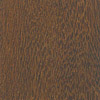 CARAMBÁ
CARAMBÁ
NOME CIENTÍFICO
Erisma uncinatum
OUTROS NOMES POPULARES
Bruteiro, cachimbo-de-jabuti, cambará, cambará-rosa, cedrilho, jaboti, jaboti-da-terra-firme, quaruba-vermelha, quarubarana, quarubatinga, verga-de-jabuti.
NOMES INTERNACIONAIS
Jaboty, kwanie (Guiana).
CARACTERÍSTICAS GERAIS
Cerne e alburno distintos pela cor, cerne castanho avermelhado;
Sem brilho;
Cheiro e gosto impercetíveis;
Densidade baixa;
Dura ao corte;
Grã direita a revessa;
Textura média a grossa.
DURABILIDADE NATURAL
Apresenta baixa durabilidade ao ataque de organismos xilófagos (fungos e insetos)
TRABALHABILIDADE
Fácil de aplainar, serrar e lixar, mas apresenta superfície de acabamento ruim (felpuda).
USOS
CONSTRUÇÃO CIVIL
Leve em esquadrias: Portas, janelas, caixilhos
Leve interna, estrutural: Ripas
Leve interna, utilidade geral: Lambris, molduras, guarnições, forros.
Uso temporário: Andaimes, fôrmas para concreto, pontaletes
MOBILIÁRIO
Utilidade geral: Móveis estândar, partes internas de móveis inclusive daqueles decorativos
OUTROS USOS: Lâminas decorativas, chapas compensadas, embalagens.
BOTANICAL NAME
Erisma uncinatum
OTHER NAMES
Bruteiro, cachimbo-de-jabuti, cambará, cambará-rosa, cedrilho, jaboti, jaboti-da-terra-firme, quaruba-vermelha, quarubarana, quarubatinga, verga-de-jabuti.
INTERNATIONAL NAMES
Jaboty, kwanie (Guyana).
GENERAL CHARACTERISTICS
Heartwood and sapwood distinct in color, reddish brown heartwood;
Dull;
Smell and taste unnoticeable;
Low density;
Hard to cut;
Grain straight to interlocked;
Medium to coarse texture.
NATURAL DURABILITY
It has low durability to the attack of xylophagous organisms (fungi and insects)
WORKING PROPERTIES
Easy planing, sawing and sanding, but has poor surface finish (downy).
USES
CONSTRUCTION
Frameworks: Doors, windows, frames
Internal light, strutural: Laths
Internal light, general utility: Wall panelling, moldings, finishings, ceilings.
Temporary use: Scaffolding, concrete forms, posts and braces.
FURNITURE
General utility: Standard furniture, concealed parts of furniture including decorative
OTHER USES: Decorative veneer, plywood, packaging.
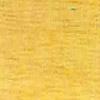 CAXETA
CAXETA
NOME CIENTÍFICO
Simarouba amara
OUTROS NOMES POPULARES
Caixeta, caxeta, marupaúba, paraparaíba, pararaúba, parariúba, pau-paraíba, simaruba, tamanqueira.
NOMES INTERNACIONAIS
Aceituno (Costa Rica; Honduras; Nicarágua; Panamá), marupa (Alemanha; Espanha; França), simaruba (Colômbia; Estados Unidos; Guiana; Itália; Suécia; Venezuela; Inglaterra).
CARACTERÍSTICAS GERAIS
Cerne e alburno indistintos pela cor, esbranquiçado a levemente amarelado;
Brilho moderado;
Cheiro impercetível e gosto levemente amargo;
Densidade baixa;
Macia ao corte;
Grã direita;
Textura média a grossa.
Superfície lustrosa.
DURABILIDADE NATURAL
Madeira suscetível à ação de fungos manchadores. Em laboratório apresentou baixa durabilidade a fungos apodrecedores e ao ataque de cupins. A madeira é considerada suscetível ao ataque de cupins, perfuradores marinhos e broca-de-madeira (gênero Lyctus).
TRABALHABILIDADE
É fácil de ser trabalhada, fácil de serrar, aplainar, pregar, parafusar e permite bom acabamento. Fácil de colar. Para torneá-la é preciso utilizar velocidade alta e facas afiadas.
USOS
CONSTRUÇÃO CIVIL
Leve interna, utilidade geral: Cordões, guarnições, rodapés, forros, lambris
MOBILIÁRIO
Utilidade geral: Móveis estândar
OUTROS USOS: Molduras para quadros, instrumentos musicais ou parte deles, cabos de vassoura, palitos, chapas compensadas, lâminas decorativas, tamancos, artigos de desporto e brinquedos, embalagens, saltos para calçado, urnas funerárias.
BOTANICAL NAME
Simarouba amara
OTHER NAMES
Caixeta, caxeta, marupaúba, paraparaíba, parariúba, parariúba, pau-paraíba, simaruba, tamanqueira.
INTERNATIONAL NAMES
Aceituno (Costa Rica; Honduras; Nicaragua; Panama), marupa (Germani; Spain; France), simaruba (Colombia; United States; Guyana; Italy; Sweden; Venezuela; England).
GENERAL CHARACTERISTICS
Heartwood and sapwood indistinct by color, off-white to slightly yellowish
Moderate brightness;
Smell and taste slightly bitter;
Low density;
Soft to cut;
Straight grain;
Medium to coarse texture;
Lustrous surface.
NATURAL DURABILITY
Wood susceptible to the action of fungi stainers. In laboratory showed low durability decay fungi and termites. Wood is considered susceptible to termites, marines borers and drill-to-wood (genus Lyctus)
WORKING PROPERTIES
It is easy to work, easy sawing, planing, nailing, screwing and allows good finish easy to paste. To turn it is necessary to use high speed and sharp knives.
USES
CONSTRUCTION
Internal light, general utility: Finishings, trimmings, skirting boards, ceilings, wall panelling
FURNITURE
General utility: Standard furniture.
OTHER USES: Picture framing, musical instruments or parts thereof, broom cables, toothpicks, plywood, decorative veneer, clogs, sports goods and toys, packaging, heels for footwear, funeral urns.
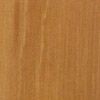 CEDRO ROSA
CEDRO ROSA
NOME CIENTÍFICO
Cedrela spp., Meliaceae
OUTROS NOMES POPULARES
Cedro-amargo, cedro-amargoso, cedro-batata, cedro-branco, cedro-cheiroso, cedro-do-amazonas, cedro-manso, cedro-rosa, cedro-verdadeiro, cedro-vermelho.
NOMES INTERNACIONAIS
Acajou femelle, ceder, cedes, cedo clavel (Colômbia), cedre acajou (Guiana Francesa), cedro, cedro amargo (Panamá), cedro amarillo (Venezuela), cedro blaco, cedro caoba, cedro colorado (Peru), cedro de castilla (Equador), cedro hembra (Rep. Dominicana), cedro macho (Cuba), cedro oloroso, cedro real (El Salvador), cedro-rosa (Suriname), cigarbox (Estados Unidos), cóbano (Costa Rica), culche (México), kurana (Guiana), redceder, south american cedar, spanish cedar (Estados Unidos; Inglaterra).
CARACTERÍSTICAS GERAIS
Cerne e alburno distintos pela cor, cerne bege rosado;
Superfície lustrosa;
Cheiro percetível, agradável e característico, gosto ligeiramente amargo;
Densidade baixa;
Grã direita;
Textura média a grossa.
DURABILIDADE NATURAL
A madeira de cedro apresenta durabilidade moderada ao ataque de organismos xilófagos (fungos e insetos). Existe variação quanto á durabilidade do cerne, algumas espécies são resistentes ao ataque de cupins subterrâneos e cupins-de-madeira-seca, outras espécies (por exemplo Cedrela fissilis) são muito suscetíveis ao ataque por esses organismos. Apresenta baixa resistência ao ataque de xilófagos marinhos. Estudo realizado verificou que a durabilidade desta madeira é inferior a 12 anos de serviço em contato com o solo.
TRABALHABILIDADE
A madeira de cedro é fácil de aplainar, serrar, lixar, furar, pregar, colar e tornear. Apresenta bom acabamento, em alguns casos pode ocorrer exsudação de resina.
USOS
CONSTRUÇÃO CIVIL
Leve em esquadrias: Portas, janelas, caixilhos
Leve interna, decorativa: Lambris, painéis molduras, guarnições, forros
MOBILIÁRIO
Alta qualidade: Móveis finos, móveis decorativos
OUTROS USOS: Chapas compensadas, embalagens, molduras para quadros, moldes e modelos, decoração e adorno (escultura e entalhe), decoração e adorno, instrumentos musicais ou partes deles, embarcações (coberturas, pisos, forros).
BOTANICAL NAME
Cedrela spp., Meliaceae
OTHER NAMES
Cedro-amargo (bitter), cedro-amargoso, cedro-batata (potato), cedro-branco (white), cedro-cheiroso (perfumed), cedro-do-amazonas (amazon), cedro-manso (meek), cedro-rosa (rosy), cedro-verdadeiro (true), cedro-vermelho (red).
INTERNATIONAL NAMES
Acajou femelle, ceder, cedes, cedo clavel (Colombia), cedre acajou (French Guiana), cedro, cedro amargo (Panama), cedro amarillo (Venezuela), cedro blaco, cedro caoba, cedro colorado (Peru), cedro de castilla (Ecuador), cedro hembra (Dominican Republic), cedro macho (Cuba), cedro oloroso, cedro real (El Salvador), cedro-rosa (Surinam), cigarbox (USA), cóbano (Costa Rica), culche (Mexico), kurana (Guyana), redceder, south american cedar, spanish cedar (USA; England).
GENERAL CHARACTERISTICS
Heartwood and sapwood distinct in color, light brown heartwood with a rosy tinge;
Glossy surface;
Smell perceptible, pleasant and characteristic, slightly bitter taste;
Low density;
Straight grain;
Medium to coarse texture
NATURAL DURABILITY
Moderately durable to attack of wood eating fungi and insects. The wood of C. odorata is resistant to the attack of subterranean and dry-wood termites; other species such as C. fissilis, are very susceptible to termites. The wood shows poor resistance to marine borers. A study carried out verified that the durability of the wood is inferior to 12 years of service in contact with the soil.
WORKING PROPERTIES
Cedro rosa wood is easy to plane, saw, sand, bore, nail, glue and turno. It shows good finishing althrough in some cases resin exudation may occur.
USES
CONSTRUCTION
Frameworks: Doors, windows, frames.
Internal light, decorative: Wall panelling, panels, moldings, trimmings, ceilings.
FURNITURE
Hight quality: Decorative furniture and cabinetmaking, reproduction furniture
OTHER USES: Plywood, Decorative veneer, picture framing, moldings and models, decoration and adornment (sculpture and carvings), musical instruments or parts thereof, boatbuildings (Roofs, floors, ceilings).
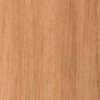 CEDROMARA
CEDROMARA
NOME CIENTÍFICO
Cedrelinga cateniformis (Ducke) Ducke, Leguminosae
OUTROS NOMES POPULARES
Bandarra, cedrarana, cedrilho, cedro, cedro-agono, cedro-aguano, cedro alagoano, cedro-amazonense, cedro-branco, cedro-urana, cedroarana, cedromara, cedrorama, cedrão, mara, mara-branca, taperibá-açu.
NOMES INTERNACIONAIS
Tornillo.
CARACTERÍSTICAS GERAIS
Cerne e alburno: pouco distintos a indistintos;
Cor: cinza-rosado (5YR 7/2)
Camadas de crescimento: distintas;
Grã : direita
Textura: média
Figura tangencial: de aspeto fibroso acentuado, causado pelo destaque do parênquima axial, das linhas vasculares e das fibras;
Figura radial: destacada, causada pelas linhas vasculares e pelo contraste dos raios;
Brilho: acentuado;
Cheiro: característico agradável;
Resistência ao corte manual: macia.
DURABILIDADE NATURAL
A madeira de cedrorana apresenta durabilidade moderada ao ataque de fungos apodrecedores e cupins. Estudo realizado verificou que a durabilidade desta madeira é inferior a 12 anos de serviço em contato com o solo.
TRABALHABILIDADE
A Madeira de cedrorana é fácil de aplainar, serrar, pregar e parafusar. Recebe bom acabamento.
USOS
CONSTRUÇÃO CIVIL
Leve em esquadrias: Portas, janelas
Leve interna, estrutural: Ripas, partes secundárias de estruturas
Leve interna, utilidade geral: Forros, guarnições, cordões, rodapés.
Uso temporário: Pontaletes, andaimes, fôrmas para concreto
MOBILIÁRIO
Utilidade geral: Móveis estândar, partes internas de móveis inclusive daqueles decorativos
OUTROS USOS: Chapas compensadas, embalagens.
BOTANICAL NAME
Cedrelinga cateniformis (Ducke) Ducke, Leguminosae
OTHER NAMES
Bandarra, cedrarana, cedrilho, cedro, cedro-agono, cedro-aguano, cedro alagoano, cedro-amazonense, cedro-branco (white), cedro-urana, cedroarana, cedromara, cedrorama, cedrão, mara, mara-branca (white), taperibá-açu.
INTERNATIONAL NAMES
Tornillo.
GENERAL CHARACTERISTICS
Heartwood and sapwood: slightly distinct to indistinct;
Color: pinkish gray (5yr 7/2)
Growth rings: distinct;
Grain: straight
Texture: medium
Tangential figure: accentuated fibrous aspect, caused by prominent axial parenchyma, vascular lines and fibers;
Radial Figure: detached, caused by vascular lines and the contrast of the rays;
Brightness: sharp;
Smell: pleasant characteristic;
Resistance to the manual cut: soft.
NATURAL DURABILITY
Cedrorana wood presents moderate durability to the attack of decay fungi and termites. A study carried out verified that the durability of this wood is less than 12 years of service in contact with the soil.
WORKING PROPERTIES
Cedrorana wood is easy to saw, plane, nail and screw. Receives good finish.
USES
CONSTRUCTION
Framework light: Door, windows
Internal light, strutural: Laths, secondary parts of structures
Internal light, general utility: Ceilings, trimmings, finishings, skirting boards
Temporary use: Posts and braces, scaffolding, concrete forms
FURNITURE
General utility: Standard furniture, concealed parts of furniture including decorative
OTHER USES: Plywood, packaging.
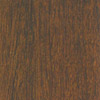 CUMARU FERRO
CUMARU FERRO
NOME CIENTÍFICO
Dipteryx odorata (Aublet.) Willd., Leguminosae
OUTROS NOMES POPULARES
Camaru, camaru-ferro, cambaru, cambaru-ferro, champanha, cumaru-amarelo, cumaru-da-folha-grande, cumaru-escuro, cumaru-rosa, cumaru-roxo, cumaru-verdadeiro, cumbari, cumbaru-ferro, muirapagé.
NOMES INTERNACIONAIS
Charapilla (Peru), cumaru, ebo (Costa Rica; Honduras; Panamá), faux gaiax (Guiana Francesa), gaiac de cayenne, koemaroe (Suriname), sarrapia (Colômbia; Venuzuela), tonka (Guiana).
CARACTERÍSTICAS GERAIS
Cerne e alburno distintos pela cor, cerne castanho-claro-amarelado;
Brilho moderado;
Cheiro e gosto impercetíveis;
Densidade alta;
Dura ao corte;
Grã revessa;
Textura fina a média, aspeto fibroso atenuado;
Superfície pouco lustrosa.
DURABILIDADE NATURAL
O cerne apresenta alta resistência ao ataque de organismos xilófagos (fungos apodrecedores e cupins). Em ensaios de campo com estacas em contato com o solo, esta espécie apresentou alta durabilidade aos organismos xilófagos e foi considerada com durabilidade superior a 12 anos de serviço em contato com o solo. Apresentou baixa resistência, em ensaios de campo, aos xilófagos marinhos.
TRABALHABILIDADE
A madeira de cumaru é difícil de ser trabalhada, mas recebe excelente acabamento no torneamento. Acabamento ruim nos trabalhos de plaina e lixa, é difícil de ser perfurada. Devido à natureza oleosa, a madeira apresenta dificuldade em ser colada. Aceita polimento, pintura, verniz e lustre.
USOS
CONSTRUÇÃO CIVIL
Pesada externa: Pontes, postes, mourões, estacas, esteios, cruzetas, dormentes ferroviários
Pesada interna: Vigas, caibros
Leve em esquadrias: Batentes
Leve interna, decorativa: Forros, Lambris
Assoalhos: Tacos, tábuas, parquetes, degraus de escada
MOBILIÁRIO
Alta qualidade: Partes decorativas de móveis
OUTROS USOS: Cabos de ferramentas, transporte, embarcações.
BOTANICAL NAME
Dipteryx odorata (Aublet.) Willd., Leguminosae
OTHER NAMES
Camaru, camaru-ferro (iron), cambaru, cambaru-ferro, champanha, cumaru-amarelo (yellow), cumaru-da-folha-grande (large sheet), cumaru-escuro (dark), cumaru-rosa (rosy), cumaru-roxo (purple), cumaru-verdadeiro (true), cumbari, cumbaru-ferro (iron), muirapagé.
INTERNATIONAL NAMES
Charapilla (Peru), cumaru, ebo (Costa Rica; Honduras; Panama), faux gaiax (French Guiana), gaiac de cayenne, koemaroe (Surinam), sarrapia (Colombia; Venezuela), tonka (Guyana).
GENERAL CHARACTERISTICS
Heartwood and sapwood distinct in color, yellowish light brown heartwood;
Moderate brightness;
Smell and taste unnoticiable;
High density;
Hard to cut;
Interlocked grain;
Fine to medium texture, shightly fibrous aspect;
Slightly glossy surface.
NATURAL DURABILITY
The heartwood has a high resistance to the attack of organisms xilófagos (decay fungi and termites). In field tests with stakes in contact with the ground, this species showed high durability to bodies xilófagos and was considered with superior durability for 12 years of service in contact with the ground. Presented low resistance in field trials, the xilófagos marine.
WORKING PROPERTIES
Cumaru wood is difficult to machine but excellent to turno. Requires attention in planing and sanding otherwise results will be poor. Also difficult to bore. Due to its somewhat oily surface, it may require care in gluing. The wood accepts polishing, painting, varnishing and chandelier.
USES
CONSTRUCTION
External heavy: Bridge building, poles, posts, piling, spars, crossarms, railway crossties
Internal heavy: Beams, rafters
Frameworks: Posts and jambs
Internal light, decorative: Ceilings, wall panelling,
Flooring: Flooring boards, boards, parquets, stairs
FURNITURE
Hight quality: Decorative pieces of furniture.
OTHER USES: Tool handles, transport (frame and bodywork for vehicles), boatbuildings.
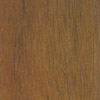 CUPIÚBA
CUPIÚBA
NOME CIENTÍFICO
Goupia glabra Aubl., Goupiaceae
OUTROS NOMES POPULARES
Cachaceiro, copiúba, copiúva, cupiúba-rosa, peniqueiro, peroba-do-norte, peroba-fedida, vinagreiro.
NOMES INTERNACIONAIS
Cabacalli, copie, couepi, goupi, goupil, kabikalli (Suriname), kaboekallii, kabukalli, koepi, koepie (Guiana; Guiana Francesa), kopi, pilon (Venezuela).
CARACTERÍSTICAS GERAIS
Cerne e alburno indistintos pela cor, castanho-avermelhado;
Superfície sem brilho;
Cheiro perceptível, desagradável, e gosto imperceptível;
Densidade alta;
Grã irregular;
Textura média
DURABILIDADE NATURAL
Em ensaios de laboratório a madeira de cupiúba demonstrou ter alta resistência ao ataque de organismos xilófagos (fungos e cupins). Apresenta resistência a fungos apodrecedores (podridão branca e parda) e cupins-de-madeira-seca, entretanto não é resistente aos xilófagos marinhos. Estudo realizado verificou que a durabilidade desta madeira é superior a 12 anos de serviço em contato com o solo.
TRABALHABILIDADE
A madeira de cupiúba é fácil de trabalhar com ferramentas manuais ou com máquinas. É fácil de serrar, aplainar, tornear, colar e parafusar. O uso de pregos sem furação pode provocar rachaduras. Recebe bom acabamento. Aceita bem a colagem mas não é adequada para a fabricação de compensados, por apresentar rachaduras na tora. Boa aceitação de tinta, verniz, emassamento e polimento.
USOS
CONSTRUÇÃO CIVIL
Pesada externa: Postes, pontes, mourões, cruzetas, esteios, escoras
Pesada interna: Vigas, caibros
Leve interna, estrutural: Ripas, partes secundárias de estruturas
OUTROS USOS: Cabos de ferramentas, transporte, embarcações, embalagens.
BOTANICAL NAME
Goupia glabra Aubl., Goupiaceae
OTHER NAMES
Cachaceiro, copiúba, copiúva, cupiúba-rosa (rosy), peniqueiro, peroba-do-norte (northern), peroba-fedida (fedid), vinagreiro (vinegar tree).
INTERNATIONAL NAMES
Cabacalli, copie, couepi, goupi, goupil, kabikalli (Surinam), kaboekallii, kabukalli, koepi, koepie (Guyana; French Guiana), kopi, pilon (Venezuela).
GENERAL CHARACTERISTICS
Heartwood and sapwood indistinct by color, reddish brown;
Absent or little luster;
Smell perceptible, unpleasant, and taste imperceptible;
High density;
Irregular grain;
Medium texture.
NATURAL DURABILITY
In laboratory tests cupiúba showed high resistance to the attack of decay fungi and termites. Lab tests indicated it to be highly resistant to decay fungi (white rot and brown rot) and to dry wood termites, but not resistant to marine borers. In ground contact, cupiúba wood stakes resisted for more than 12 years.
WORKING PROPERTIES
Cupiuba is easy to work with both machine and hand tools. It is easy to saw, plane, turn, glue and screw. Use of nails without drilling can cause cracking. The wood yelds good finish. Accepts gluing but does not yield good plywood material due to log splitting. Good to paint, varnish and polish.
USES
CONSTRUCTION
External heavy: Poles, bridge building, crossarms, spars, struts
Internal heavy: Beams, rafters
Internal light, strutural: Laths, secondary parts of structures
OTHER USES: Tool handles, transport, boatbuildings, packaging.
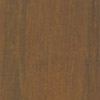 FAVEIRA FERRO
FAVEIRA FERRO
NOME CIENTÍFICO
Dinizia excelsa
OUTROS NOMES POPULARES
Angelim, angelim-falso, angelim-ferro, algelim-pedra, angelim-pedra-verdadeiro, faveira-carvão, faveira-dura, faveira-ferro, faveira-grande.
NOMES INTERNACIONAIS
Angelim pedra, faveira preta, kuraru, parakwa (Guiana)
CARACTERÍSTICAS GERAIS
Cerne e alburno pouco distintos pela cor, cerne castanho-avermelhado;
Brilho moderado;
Cheiro desagradável e gosto impercetível;
Densidade alta;
Dura ao corte;
Grã direita a irregular;
Textura média a grossa;
Superfície pouco lustrosa.
DURABILIDADE NATURAL
O cerne apresenta alta resistência ao ataque de organismos xilófagos (fungos e insetos). Em ensaios de campo com estacas, esta madeira foi considerada altamente durável com vida média maior que 8 anos.
TRABALHABILIDADE
A madeira é difícil de ser trabalhada, mas recebe bom acabamento. A madeira é fácil de tornear com bom acabamento e na furação apresenta desempenho regular.
USOS
CONSTRUÇÃO CIVIL
Pesada externa: Pontes, postes, estacas, esteios, cruzetas, dormentes ferroviários, obras portuárias, piers
Pesada interna: Vigas, caibros
OUTROS USOS: Cabos de ferramentas, transporte.
BOTANICAL NAME
Dinizia excelsa
OTHER NAMES
Angelim, angelim-falso, angelim-ferro, algelim-pedra, angelim-pedra-verdadeiro, faveira-carvão, faveira-dura, faveira-ferro, faveira-grande.
INTERNATIONAL NAMES
Angelim pedra, faveira preta, kuraru, parakwa (Guyana)
GENERAL CHARACTERISTICS
Heartwood and sapwood indistinct by color, reddish brown heartwood;
Moderate brightness;
Slightly unpleasant odor and imperceptible taste;
High density;
Hard to cut;
Grain straight to irregular;
Medium to coarse texture;
Slightly glossy surface.
NATURAL DURABILITY
The wood is considered to be of high resistance to the action of fungi stainers. Experimental external confirm with na average service life more than 8 years.
WORKING PROPERTIES
It is difficult to be machined, but excelente to finishing. The wood is easy to turn with good finish and receives regular screws and nails.
USES
CONSTRUCTION
External heavy: Bridge building, poles, posts, piling, spars, crossarms, railway crossties, port works, piers
Internal heavy: Beams, rafters
OTHER USES: Tool handles, transport (frame and bodywork for vehicles).
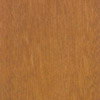 GARAPEIRA
GARAPEIRA
NOME CIENTÍFICO
Apuleia leiocarpa (J. Vogel) J.F. Macbr., Leguminosae
OUTROS NOMES POPULARES
Amarelinho, barajuba, garapa, gema-de-ovo, grápia, grapiapúnha, jataí-amarelo, muirajuba, muiratuá.
NOMES INTERNACIONAIS
Grapia
CARACTERÍSTICAS GERAIS
Cerne e alburno distintos pela cor, cerne variando de bege-amarelado a castanho-amarelado;
Superfície lustrosa e lisa ao tato;
Cheiro e gosto imperceptíveis;
Densidade média;
Dura ao corte;
Grã revessa;
Textura média.
DURABILIDADE NATURAL
O cerne apresenta resistência moderada ao ataque de fungos apodrecedores e alta resistência ao cupim-de-madeira-seca. Em ensaio laboratorial, esta madeira foi considerada resistente aos fungos apodrecedores Glocophyllum trabum, Coriolus versicola e Poria monticola. Em ensaio de campo, com estacas em contato com o solo, esta madeira apresentou vida média inferior a 9 anos.
TRABALHABILIDADE
A madeira de garapa é fácil de ser trabalhada desde que se use ferramentas apropriadas devido à presença de sílica; porém cola bem e proporciona bom acabamento.
USOS
CONSTRUÇÃO CIVIL
Pesada externa: Pontes, estacas, dormentes ferroviários, cruzetas, mourões, postes
Pesada interna: Vigas, caibros
Leve em esquadrias: Portas, janelas, caixilhos
Leve interna, decorativa: Cordões, guarnições, forros, rodapés
Assoalhos: Tacos, tábuas, parquetes, degraus de escada.
Mobiliário
Alta qualidade: Móveis decorativos
OUTROS USOS: Cabos de ferramentas, transporte.
BOTANICAL NAME
Apuleia leiocarpa (J. Vogel) J.F. Macbr., Leguminosae
OTHER NAMES
Amarelinho, barajuba, garapa, gema-de-ovo, grápia, grapiapunha, jataí-amarelo, muirajuba, muiratuá.
INTERNATIONAL NAMES
Grapia
GENERAL CHARACTERISTICS
Heartwood and sapwood distinct in color, heartwood ranging from beige yellowish to yellowish-brown
Glossy surface and smooth to the touch;
Smell and taste unnoticeable;
Medium density;
Hard to cut;
Interlocked grain;
Medium to coarse texture;
NATURAL DURABILITY
Heartwood is moderately resistant to the attack of decay fungi and highly resistant to drywood termites. In laboratory test, this wood was considered resistant to rotting fungi Glocophyllum trabum, Coriolus versicola and Poria monticola. In field tests the wood showed average service life of less than 9 years.
WORKING PROPERTIES
Garapeira is easy to be machined since it uses adequate tools, due to high sílica contento; it glues well and yelds good finish.
USES
CONSTRUCTION
External heavy: Bridge building, piling, railway crossties, crossarms, poles, posts
Internal heavy: Beams, rafters
Framework, light: Doors, janelas, frames
Internal light, decorative: Finishings, trimmings, ceilings, skirting boards
Flooring: Flooring boards, boards, parquets, stairs
FURNITURE
High quality: Decorative furniture
OTHER USES: Tool handles, transport.
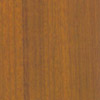 GUARIÚBA
GUARIÚBA
NOME CIENTÍFICO
Clarisia racemosa
OUTROS NOMES POPULARES
Catruz, gameleiro, guariúba-amarela, janitá, oiti, oiticica, oiticica-da-mata, quariúba, tatajuba-amarela, ticica.
NOMES INTERNACIONAIS
Capinuri, guariúba, moral babo, moral comida de mono, sota, tulpay, zota.
CARACTERÍSTICAS GERAIS
Cerne e alburno distintos pela cor, cerne amarelo quando recém cortado escurecendo para castanho-amarelado, alburno branco-amarelado;
Brilho moderado;
Cheiro e gosto impercetíveis;
Densidade média;
Moderadamente dura ao corte;
Grã direita ou entrecruzada;
Textura média.
DURABILIDADE NATURAL
Em ensaio de laboratório apresentou baixa durabilidade a organismos xilófagos (fungos, cupins e organismos marinhos). Baixa resistência ao ataque de cupins de madeira seca.
TRABALHABILIDADE
Moderadamente difícil de serrar. É fácil de aplainar, furar e pregar. Recebe bom acabamento. A presença da grã entrecruzada requer ferramentas bem afiadas para se obter uma superfície bem acabada.
USOS
CONSTRUÇÃO CIVIL
Leve em esquadrias: Persianas e janelas
Leve interna, decorativa: Rodapés, forros, lambris
Leve interna, estrutural: Ripas, partes secundárias de estruturas
Mobiliário
Alta qualidade: Móveis decorativos
OUTROS USOS: Instrumentos musicais ou parte deles, decoração e adorno, lâminas, chapas compensadas, cabos de ferramenta, utensílios gerais, embalagens.
BOTANICAL NAME
Clarisia racemosa
OTHER NAMES
Catruz, gameleiro, guariúba-amarela, janitá, oiti, oiticica, oiticica-da-mata, quariúba, tatajuba-amarela, ticica.
INTERNATIONAL NAMES
Capinuri, guariúba, moral babo, moral comida de mono (food), sota, tulpay, zota.
GENERAL CHARACTERISTICS
Heartwood and sapwood distinct in color, yellow heart when freshly cut darkening to brown-yellow, yellowish-white sapwood;
Moderate brightness;
Smell and taste unnoticeable;
Medium density;
Moderately hard to cut;
Grain straight or cross-crossed;
Medium texture.
NATURAL DURABILITY
In laboratory testing showed low durability wood decay organisms (fungi, termites and marine organisms). Low resistance to the attack fungi and dry-wood termites.
WORKING PROPERTIES
Moderately difficult to saw. It´s easy planing, boring and preach. Receives good finish. The presence of the interlocking grain requires very Sharp tools to obtain a well-finished surface.
USES
CONSTRUCTION
Frameworks: Blinds, windows
Internal light, decorative: skirtting boards, ceilings, wall panelling
Internal light, structural: Laths, secondary parts of structures
FURNITURE
High quality: Decorative furniture
OTHER USES: Musical instruments or parts thereof, decoration and adornment, blades, plywood, tool handles, general utensils, packaging.
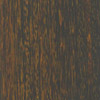 IPÊ
IPÊ
NOME CIENTÍFICO
Tabebuia spp.
OUTROS NOMES POPULARES
Ipê-amarelo, ipê-do-cerrado, ipê-pardo, ipê-preto, ipê-roxo, ipê-tabaco, ipê-una, ipeúva, pau-d’arco, pau-d’arco-amarelo, peúva, piúna, piúna-amarela, piúna-roxa, piúva, piúva-do-serrado.
NOMES INTERNACIONAIS
Bethabara, ipé, ipê, lapacho, lapacho ararillo.
CARACTERÍSTICAS GERAIS
Cerne e alburno distintos pela cor, cerne pardo ou castanho com reflexos amarelados ou esverdeados, alburno branco-amarelado;
Superfície sem brilho;
Cheiro e gosto impercetíveis;
Densidade alta;
Dura ao corte;
Grã irregular a revessa;
Textura fina.
DURABILIDADE NATURAL
A madeira de ipê, em ensaios de laboratório, demonstrou ser de alta resistência ao ataque de organismos xilófagos (fungos e cupins). Em experimento realizado em ambiente marinho foi moderadamente atacada por organismos perfuradores. Em ensaio de campo, com estacas em contato com o solo apresentou vida média de 8 a 9 anos. Em observações práticas, é considerada muito resistente ao apodrecimento.
TRABALHABILIDADE
A madeira de ipê é moderadamente difícil de trabalhar, principalmente com ferramentas manuais que perdem rapidamente a afiação. Recebe bom acabamento. São relatados problemas de colagem. O aplainamento é regular, é fácil de lixar e excelente para pregar e aparafusar.
USOS
CONSTRUÇÃO CIVIL
Pesada externa: Pontes, dormentes ferroviários, cruzetas, defensas
Pesada interna: Vigas, caibros
Leve em esquadrias: Portas, janelas, batentes
Leve interna decorativa: Guarnições, rodapés, forros e lambris
Assoalhos: Tábuas, tacos, parquetes, degraus de escada
Mobiliário
Alta qualidade: Partes decorativas de móveis
OUTROS USOS: Artigos de desporto e brinquedos, cabos de ferramentas, implementos agrícolas, peças torneadas, transporte, instrumentos musicais ou parte deles.
BOTANICAL NAME
Tabebuia spp.
OTHER NAMES
Ipê-amarelo (yellow), ipê-do-cerrado (savannah), ipê-pardo (brown), ipê-preto (black), ipê-roxo (purple), ipê-tabaco (tabaco), ipê-una, ipeúva, pau-d’arco, pau-d’arco-amarelo, peúva, piúna, piúna-amarela, piúna-roxa, piúva, piúva-do-serrado.
INTERNATIONAL NAMES
Bethabara, ipé, ipê, lapacho, lapacho ararillo.
GENERAL CHARACTERISTICS
Heartwood and sapwood distinct in color, heartwood dark brown or brown with yellowish or greenish tinge, yellowish white sapwood;
Absent or little luster;
Smell and taste unnoticiable;
High density;
Hard to cut;
Irregular to interlocked grain;
Fine texture.
NATURAL DURABILITY
In laboratory testing showed both highly resistant to the attack of both termites and decay fungi. Moderately resistant to marine borers. Fields tests indicated a service life of 8-9 years in ground contact. In practical observations, it is considered very resistant to decay.
WORKING PROPERTIES
Ipê is moderately difficult to machine, specially with hand tools due to the blunting effect on the cutting edges. Good finishing characteristics although gluing may require attenction. Other operations such as planing, sanding, nailing and screwing are easy and give good results.
USES
CONSTRUCTION
External heavy: Bridge building, railway crossties, crossarms, fenders
Internal heavy: Beams, rafters
Framework, light: Doors, windows, posts and jambs
Internal light, decorative: Trimmings, skirting boards, ceilings, wall panelling
Flooring: Boards, flooring boards, parquets, stairs
FURNITURE
High quality: Decorative pieces of furniture
OTHER USES: Sports goods and toys, tool handles,
agricultural implements, turned parts, transport, musical, instruments or parts thereof.
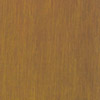 ITAÚBA
ITAÚBA
NOME CIENTÍFICO
Mezilaurus itauba
OUTROS NOMES POPULARES
Itaúba-abacate, itaúba-amarela, itaúba-grande, itaúba-preta, itaúba-verdadeira, itaúba-vermelha, louro-itaúba.
NOMES INTERNACIONAIS
Itauba
CARACTERÍSTICAS GERAIS
Cerne amarelado-esverdeado, quando recém serrado, tornando-se castanho-esverdeado-escuro;
Cheiro agradável, levemente adocicado e gosto impercetível;
Densidade alta;
Grã ondulada ou revessa;
Textura média;
Superfície irregularmente lustrosa.
DURABILIDADE NATURAL
A madeira de itaúba é considerada de alta resistência ao ataque de organismos xilófagos (fungos apodrecedores, cupins e xilófagos marinhos). Em experimento realizado em ambiente marinho foi moderadamente atacada por organismos.
TRABALHABILIDADE
A madeira de itaúba é moderadamente difícil de ser trabalhada, tanto com ferramentas manuais como com máquina, devido á presença de sílica; porém bom acabamento.
USOS
CONSTRUÇÃO CIVIL
Pesada externa: Pontes, dormentes ferroviários, postes, cruzetas, defensas
Pesada interna: Vigas, caibros, tesouras
Leve em esquadrias: Batentes, venezianas
Assoalhos: Tábuas, tacos
Mobiliário
Utilidade geral: Móveis estândar e partes internas de móveis inclusive daqueles decorativos.
OUTROS USOS: Implementos agrícolas, transporte, peças torneadas, embarcações (coberturas, pisos, forros).
BOTANICAL NAME
Mezilaurus itauba
OTHER NAMES
Itaúba-abacate (avocado), itaúba-amarela (yellow), itaúba-grande (big), itaúba-preta (black), itaúba-verdadeira (true), itaúba-vermelha (red), louro-itaúba.
INTERNATIONAL NAMES
Itauba
GENERAL CHARACTERISTICS
Greenish yellow heartwood when freshly cut, becoming dark greenish brown;
Slightly sweet pleasant odor, imperceptible taste;
High density;
Wavy or crossed grain;
Medium texture;
Surface irregulary glossy.
NATURAL DURABILITY
Itauba is considered to be of high resistance to the atack of termites, decay fungi and marines borers. Experimente in marine environment showed the wood to be moderately resistant to marine borers.
WORKING PROPERTIES
Itauba is moderately difficult to be worked with machine and hand tools, due to the presence of sílica. The wood finishes well.
USES
CONSTRUCTION
External heavy: Bridge building, railway crossties, poles, crossarms, fenders
Internal heavy: Beams, rafters, trusses
Framework, light: Posts and jambs, windows
Flooring: Boards, flooring boards
FURNITURE
General utility: standard furniture and concealed parts of furniture including decorative
OTHER USES: Agricultural implements, transport, turned parts, boatbuildings (roofs, floors, ceilings).
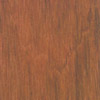 JATOBÁ
JATOBÁ
NOME CIENTÍFICO
Hymenaea spp.
OUTROS NOMES POPULARES
Copal, courbaril, jataí, jataíba, jatobá-curuba, jatobazinho, jutaí, jutaí-açu, jutaí-do-igapó, jutaí-grande, jutaí-mirim, jutaí-vermelho, quebra machado.
NOMES INTERNACIONAIS
Algarrobo (Colômbia; Venezuela), courbaril (Cuba; Guiana Francesa; Peru; Inglaterra), loksi, lokus (Suriname), rode locus.
CARACTERÍSTICAS GERAIS
Cerne e alburno distintos pela cor, cerne variando do castanho-amarelado ao castanho-avermelhado, alburno branco-amarelado;
Cheiro e gosto imperceptíveis;
Densidade alta;
Dura ao corte;
Grã regular a irregular;
Textura média;
Superfície pouco lustrosa.
DURABILIDADE NATURAL
A espécie Hymenaea courbaril L. é considerada altamente resistente às térmitas e fungos de podridão branca e parda, mas suscetível aos perfuradores marinhos. Em contato com o solo Hymenaea stilbocarpa Hayne apresentou vida média inferior a 9 anos sendo considerada moderadamente durável, já em ensaios de laboratório apresentou resistência média a alta ao ataque de organismos xilófagos. Em ambiente marinho a madeira de Hymenaea sp. ensaiada foi intensamente atacada por organismos perfuradores.
TRABALHABILIDADE
A madeira de jatobá é moderadamente fácil de trabalhar, pode ser aplainada, colada, parafusada e pregada sem problemas. Apresenta resistência para tornear e faquear. O acabamento é bom. Aceita pintura, verniz e lustre.
USOS
CONSTRUÇÃO CIVIL
Pesada externa: Dormentes ferroviários, cruzetas
Pesada interna: Vigas, caibros, tesouras
Leve em esquadrias: Portas, janelas, batentes
Leve interna, decorativa: Guarnições, rodapés, painéis, forros, lambris
Assoalhos: Tábuas, tacos, parquetes, degraus de escada
Mobiliário
Alta qualidade: Móveis finos
OUTROS USOS: Artigos de desporto e brinquedos, cabos de ferramentas, Implementos agrícolas, peças torneadas, transporte.
BOTANICAL NAME
Hymenaea spp.
OTHER NAMES
Copal, courbaril, jataí, jataíba, jatobá-curuba, jatobazinho, jutaí, jutaí-açu, jutaí-do-igapó, jutaí-grande (big), jutaí-mirim, jutaí-vermelho (red), quebra machado.
INTERNATIONAL NAMES
Algarrobo (Colombia; Venezuela), courbaril (Cuba; French Guiana; Peru; England), loksi, lokus (Surinam), rode locus.
GENERAL CHARACTERISTICS
Heartwood ranging from yellowish brown to reddish brown, yellowish-white sapwood;
Smell and taste unnoticiable;
High density;
Hard to cut;
Regular to irregular grain;
Medium texture;
Slightly glossy surface.
NATURAL DURABILITY
The wood of H. courbaril is considered very resistant to termites white and brown rot, but susceptible to the attack of marine borers. In gound contact, Hymenaea stilbocarpa Hayne showed to be moderately durable, with anan average servicelife of less than 9 years. In laboratory tests, the wood showed moderate to high resistance to the attack of decay organisms. In the marine environment, was strongly attacked by organisms borers.
WORKING PROPERTIES
The wood Jatoba is moderately easy to work, it can be planed, glued, screwed and nailed without problems. Somewhat resistant to turning and veneering. Finish is good. Accepts painting, varnishing and polishing.
USES
CONSTRUCTION
External heavy: Railway crossties, crossarms
Internal heavy: Beams, rafters, trusses
Framework, light: Doors, windows, posts and jambs
Internal light, decorative: Trimmings, skirting boards, panels, ceilling, wall panelling
Flooring: Boards, flooring boards, parquets, stair
FURNITURE
General utility: Fine furniture
OTHER USES: Sports goods and toys, tool handles, agricultural implements, turned parts, transport.
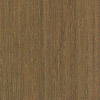 JEQUETIBÁ DE CARVÃO
JEQUETIBÁ DE CARVÃO
NOME CIENTÍFICO
Cariniana micrantha
OUTROS NOMES POPULARES
Castanha-de-macaco, castanha-vermelha, jequitibá-do-brejo, jequitibá-rosa, matamatá-vermelho, taanuari, taauari, tanari, tauari, tauari-vermelho.
NOMES INTERNACIONAIS
Não disponível.
CARACTERÍSTICAS GERAIS
Cerne/Alburno: pouco distintos;
Espessura do alburno: 2,0 cm a 12,0 cm;
Cor do cerne: marrom-avermelhado-claro (5YR 6/4);
Cor do alburno: rosa (5YR 7/3);
Camadas de crescimento: distintas;
Grã: direita;
Textura: média;
Figura tangencial: em faixas longitudinais destacadas, causadas pelas camadas de crescimento;
Figura radial: em faixas longitudinais destacadas, causadas pelas camadas de crescimento e em linhas vasculares e linhas radiais destacadas;
Brilho: moderado;
Cheiro: impercetível;
Resistência ao corte manual: macia;
Obs: apresenta canais traumáticos.
DURABILIDADE NATURAL
Não disponível.
TRABALHABILIDADE
Madeira média-leve e aceita prego, exceto nos cantos.
USOS
Recomendada para a produção de paletes, embalagens, móveis e utilitários.
BOTANICAL NAME
Cariniana micrantha
OTHER NAMES
Castanha-de-macaco, castanha-vermelha (red), jequitibá-do-brejo, jequitibá-rosa, matamatá-vermelho (red), taanuari, taauari, tanari, tauari, tauari-vermelho (red).
INTERNATIONAL NAMES
Not available.
GENERAL CHARACTERISTICS
Heartwood/sapwood: little different;
Sapwood thickness: 2,0 cm a 12,0 cm;
Heartwood color: brown-red-light (5YR 6/4);
Sapwood color: pink (5YR 7/3);
Growth rings: distinct;
Grain: right;
Texture: medium;
Tangential figure: in detached longitudinal bands caused by growth rings;
Radial figure: in detached longitudinal bands, caused by growth of layers and vascular lines and radial lines deployed;
Brightness: moderate;
Smell: imperceptible;
Resistance to the manual cut: soft;
Note: features traumatic channels.
NATURAL DURABILITY
Not available.
WORKING PROPERTIES
Wood medium-light and accepted nail, except in the corners.
USES
Recommended for the production of pallets, packaging, furniture and utilities.
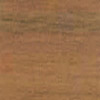 JEQUETIBÁ ROSA
JEQUETIBÁ ROSA
NOME CIENTÍFICO
Allantoma lineata
OUTROS NOMES POPULARES
Abacaíba, castanha-da-serra, castanheiro-da-serra, ceru, cheru, churu, jequitibá, ripeiro-cheru, seru, tauari.
NOMES INTERNACIONAIS
Não disponível.
CARACTERÍSTICAS GERAIS
Cerne/Alburno: distintos;
Espessura do alburno: 1,0 cm a 34,0 cm;
Cor do cerne: marrom-pálido;
Cor do alburno: cinza-rosado;
Camadas de crescimento: distintas a pouco distintas;
Grã: direita a revessa;
Textura: fina;
Figura tangencial: pouco destacada, em faixas longitudinais e em forma de V, causadas pelas camadas de crescimento, e em ondulações devido ao parênquima axial;
Figura radial: pouco destacada, em faixas longitudinais, causadas pelas camadas de crescimento;
Brilho: ausente;
Cheiro: impercetível;
Resistência ao corte transversal manual: moderadamente dura;
DURABILIDADE NATURAL
Não disponível.
TRABALHABILIDADE
Madeira de densidade média e aceita prego.
USOS
Não disponível.
BOTANICAL NAME
Allantoma lineata
OTHER NAMES
Abacaíba, castanha-da-serra, castanheiro-da-serra, ceru, cheru, churu, jequitibá, ripeiro-cheru, seru, tauari.
INTERNATIONAL NAMES
Not available.
GENERAL CHARACTERISTICS
Heartwood/sapwood: distinct;
Sapwood thickness: 1,0 cm to 34,0 cm;
Heartwood color: pale brown;
Sapwood color: pinkish gray;
Growth rings: distinct a little different;
Grain: strainght to interlocked;
Texture: thin;
Tangential figure: slightly detached in longitudinal strips and V shaped, caused by growth of layers and undulations, due to the axial parenchyma;
Radial figure: slightly highlighted in longitudinal bands, caused by growth rings;
Brightness: absent;
Smell: imperceptible;
Resistance to the manual cross-cutting: moderately hard;
NATURAL DURABILITY
Not available.
WORKING PROPERTIES
Medium density wood and accepts nails.
USES
Not available.
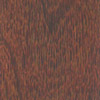 MAÇARANDUBA
MAÇARANDUBA
NOME CIENTÍFICO
Manilkara huberi
OUTROS NOMES POPULARES
Aparaiú, balata-verdadeira, maçaranduba-de-leite, maçaranduba-verdadeira, maçarandubinha, maparajuba, marapajuba-da-várzea, paraju.
NOMES INTERNACIONAIS
Balata, bullet wood, maçaranduba, massaranduba, sapodilla.
CARACTERÍSTICAS GERAIS
Cerne e alburno distintos pela cor, cerne vermelho-claro tornando-se vermelho-escuro com o tempo;
Sem brilho;
Cheiro e gosto impercetíveis;
Densidade alta;
Dura ao corte;
Grã direita;
Textura fina.
DURABILIDADE NATURAL
A madeira de maçaranduba é resistente ao ataque de fungos apodrecedores e cupins subterrâneos. Apresenta moderada resistência aos cupins-de-madeira-seca e baixa resistência aos xilófagos marinhos. A espécie Manilkara amazónica foi descrita como muito resistente ao ataque de fungos e térmitas, porém suscetível aos perfuradores marinhos. A espécie Manilkara huberi foi considerada altamente durável em contato com o solo, apresentando uma vida útil superior a 8 anos. Manilkara longifolia e Manilkara elata, em ensaios de laboratório demonstram ter resistência moderada a alta ao apodrecimento.
TRABALHABILIDADE
A madeira de maçaranduba é moderadamente difícil de cortar e aplainar, porém é fácil de tornear e colar. Tende a rachar se pregada ou aparafusada sem furação prévia. Recebe bom acabamento, pintura e verniz.
USOS
CONSTRUÇÃO CIVIL
Pesada externa: Dormentes ferroviários, pontes, cruzetas e estacas
Pesada interna: Tesouras, vigas, caibros
Assoalhos: Tacos, parquetes
Mobiliário
Alta qualidade: Partes decorativas de móveis (puxadores, entalhes)
OUTROS USOS: Peças torneadas, instrumentos musicais (arcos de violinos), transporte, lâminas, tacos de bilhar.
BOTANICAL NAME
Manilkara huberi
OTHER NAMES
Aparaiú, balata-verdadeira (true), maçaranduba-de-leite (milk), maçaranduba-verdadeira (true), maçarandubinha, maparajuba, marapajuba-da-várzea (swamp), paraju.
INTERNATIONAL NAMES
Balata, bullet wood, maçaranduba, massaranduba, sapodilla (international).
GENERAL CHARACTERISTICS
Heartwood and sapwood distinct in color, light red heartwood becoming dark red with time
Absent or little luster;
Smell and taste unnoticiable;
High density;
Hard to cut;
Straight grain;
Fine texture.
NATURAL DURABILITY
The wood of maçaranduba is resistant to the attack of decay fungi and subterranean termites. Moderately resistant to dry-wood termites and low resistance to marine borers. Manilkara amazónica is very resistant to the attack of fungi and termites, but susceptible to marine borers. Manilkara huberi is highly durable in ground contact with a service life longer than 8 years. Manilkara longifolia e Manilkara elata showed in laboratory to have moderate to high resistence to decay.
WORKING PROPERTIES
Maçaranduba is moderately difficult to saw and plane but easy to turn and glue. Tends to split when nailed or screwed, so preboring is advised. Good results in finhishing, painting and varnishing.
USES
CONSTRUCTION
External heavy: Railway crossties, bridge building, crossarms and piling
Internal heavy: Trusses, beams, rafters
Flooring: Flooring boards, parquets
FURNITURE
High quality: Decorative pieces of furniture (handles, carvings)
OTHER USES: Turned parts, musical instruments (violin bows), transport, veneer and billiard cues.
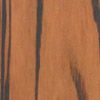 MARACATIARA
MARACATIARA
NOME CIENTÍFICO
Astronium lecointei
OUTROS NOMES POPULARES
Aderno-preto, aroeira, aroeirão, baracatiara, gonçaleiro, gonçalo-alves, maracatiara, maracatiara-branca, maracatiara-vermelha, muiracatiara-rajada, muiraquatiara, sanguessugueira.
NOMES INTERNACIONAIS
Gonçalo alves, gonçalo alvez, tigerwood.
CARACTERÍSTICAS GERAIS
Cerne e alburno distintos pela cor, cerne variável do bege-rosado ao castanho-escuro-avermelhado, com estrias mais escuras;
Brilho moderado;
Cheiro e gosto impercetíveis;
Densidade alta;
Dura ao corte;
Grã irregular;
Textura média.
DURABILIDADE NATURAL
A madeira de maracatiara é muito durável, não sendo atacada por insetos ou cupins de madeira seca. Em ensaios de campo, demonstrou durabilidade natural inferior a 7 anos. Em ambiente marinho, foi intensamente atacada por organismos perfuradores.
TRABALHABILIDADE
A madeira de maracatiara é fácil de ser trabalhada e permite excelente acabamento. Recebe bem pintura e verniz.
USOS
CONSTRUÇÃO CIVIL
Pesada interna: Tesouras, vigas, caibros
Leve em esquadrias: Janelas, portas, caixilhos, batentes
Leve interna, decorativa: Cordões, guarnições, rodapés, forros, lambris
Assoalhos: Tábuas, Tacos, parquetes
Mobiliário
Alta qualidade: Móveis decorativos
OUTROS USOS: Lâminas decorativas, peças torneadas, decoração e adorno, cabos para cutelaria, peças encurvadas ou curvadas, cabos de ferramentas, implementos agrícolas, transporte, tanoaria.
BOTANICAL NAME
Astronium lecointei
OTHER NAMES
Aderno-preto (black), aroeira, aroeirão, baracatiara, gonçaleiro, gonçalo-alves, maracatiara, maratiara-branca (white), maracatiara-vermelha (red), muiracatiara-rajada, muiraquatiara, sanguessugueira.
INTERNATIONAL NAMES
Gonçalo alves, gonçalo alvez, tigerwood.
GEBERAL CHARACTERISTICS
Heartwood and sapwood distinct in color, variable heartwood of beige-pink to dark brown-red, with darker streaks;
Moderate brightness;
Smell and taste unnoticeable;
High density;
Hard to cut;
Irregular grain;
Medium texture.
NATURAL DURABILITY
Wood Maracatiara is very durable and is not attacked by insects or dry wood termites. In field trials, demostrated natural durability less than 7 years. In the marine environment, was strongly attacked by organisms punches.
WORKING PROPERTIES
Wood maracatiara is easy to work and allows excelent finish. Accepted well paint and varnish.
USES
CONSTRUCTION
Internal heavy: Trusses, beams, rafters
Frameworks: Windows, doors, frames and jambs .
Internal light, decorative: Finishings, trimmings, skirting boards, ceilings, wall panelling
Flooring: Boards, flooring boards, parquets
FURNITURE
High quality: decorative furniture
OTHER USES: Veneer decorative, turned parts, decoration and adornment, cutlery handles, bent or curved parts, tool handles, agricultural implements, transport, cooperage.
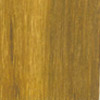 MIRINDIBA
MIRINDIBA
NOME CIENTÍFICO
Buchenavia huberi
OUTROS NOMES POPULARES
Cuiarana, guarajuba, jataí-amarelo, timboritá.
NOMES INTERNACIONAIS
Almendro (Colômbia), amarillo (Venuzuela), bois gris gris (Haiti), bois margot (Haiti), granadillo (Porto Rico; Venezuela), jucaro amarillo (Cuba), mountain wild oliver (Jamaica), nargusta, yellow oliver (Trinidad e Tobago), yellow sanders (Jamaica; Trinidad e Tobago).
CARACTERÍSTICAS GERAIS
Cerne e alburno distintos pela cor, cerne castanho-amarelado ao castanho-oliva, às vezes com estrias avermelhadas;
Cheiro e gosto indistintos;
Densidade alta;
Grã direita;
Textura fina.
DURABILIDADE NATURAL
A madeira, segundo observações práticas, é considerada de resistência moderada ao ataque de organismos xilófagos.
TRABALHABILIDADE
Não disponível.
USOS
CONSTRUÇÃO CIVIL
Pesada externa: Dormentes ferroviários
Pesada interna: Vigas e caibros
Leve interna, estrutural: Ripas
Assoalhos: Tábuas, tacos
OUTROS USOS: Lâminas decorativas, peças torneadas, cabos de ferramentas, implementos agrícolas, transporte.
BOTANICAL NAME
Buchenavia huberi
OTHER NAMES
Cuiarana, guarajuba, jataí-amarelo, timboritá.
INTERNATIONAL NAMES
Almendro (Colombia), amarillo (Venuzuela), bois gris gris (Haiti), bois margot (Haiti), granadillo (Puerto Rico; Venezuela), jucaro amarillo (Cuba), mountain wild olive (Jamaica), nargusta, yellow oliver (Trinidad and Tobago), yellow sanders (Jamaica; Trinidad and Tobago).
GENERAL CHARACTERISTICS
Heartwood and sapwood distinct in color, yellowih brown heartwood to brown-olive, sometimes with reddish streaks;
Indistinct smell and taste;
High density;
Straight grain;
Fine texture.
NATURAL DURABILITY
Wood mirindiba, according to practical obsevations, is considered moderately resistant to attack by wood-destroying organisms.
WORKING PROPERTIES
Not available.
USES
CONSTRUCTION
External heavy: Railway crossties
Internal heavy: Beams, rafters
Internal light, structural: Laths
Flooring: Boards, flooring boards
OTHER USES: Veneer decorative, turned parts, tool handles, agricultural implements, transport.
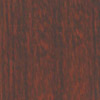 MUIRAPIRANGA
MUIRAPIRANGA
NOME CIENTÍFICO
Brosimum rubescens
OUTROS NOMES POPULARES
Conduru, conduru-de-sangue, conduru-vermelho, falso-pau-brasil, pau-brasil, pau-rainha, pau-vermelho.
NOMES INTERNACIONAIS
Muirapiranga, satiné.
CARACTERÍSTICAS GERAIS
Cerne e alburno distintos pela cor, cerne vermelho-coral a castanho-avermelhado, com veios mais escuros, alburno marron-claro;
Brilho moderado;
Cheiro e gosto impercetíveis;
Densidade alta;
Dura ao corte;
Grã direita ou revessa;
Textura média a fina.
DURABILIDADE NATURAL
A madeira de muirapiranga é altamente resistente a fungos e cupins. Cerne e alburno susceptíveis ao ataque de brocas quando deixados por um mês na floresta. Madeira muito durável e altamente resistente a térmitas.
TRABALHABILIDADE
A madeira de muirapiranga é moderadamente fácil de ser trabalhada tanto com ferramentas manuais como mecânicas. Proporciona ótimo acabamento. Cola bem. Aceita prego. É fácil de faquear, resultando em lâminas lisas, compactas e de fácil secagem. O preaquecimento é necessário antes do faqueamento
USOS
CONSTRUÇÃO CIVIL
Pesada externa: Dormentes ferroviários, cruzetas, mourões e estacas
Pesada interna: Tesouras, vigas e caibros
Leve interna, decorativa: Painéis, forros e lambris
Assoalhos: Tacos e parquetes
Mobiliário
Alta qualidade: Móveis decorativos
OUTROS USOS: Lâminas decorativas, decoração e adorno.
BOTANICAL NAME
Brosimum rubescens
OTHER NAMES
Conduru, conduru-de-sangue (blood), conduru-vermelho (red), falso-pau-brasil (false-stick-brazil), pau-brasil, pau-rainha (stick-queen), pau-vermelho (stick-red).
INTERNATIONAL NAMES
Muirapiranga, satiné.
GENERAL CHARACTERISTICS
Heartwood and sapwood distinct in color, heartwood red coral core to reddish-brown, with darker veins, light brown sapwood;
Moderate brightness
Smell and taste unnoticeable;
High density;
Hard to cut;
Grain straight or interlocked;
Texture medium to fine.
NATURAL DURABILITY
The muirapiranga wood is highly resistant to fungi and termites. Heartwood and sapwood susceptible to borers atack when left for a month in the forest. Wood very durable and highly resistant to termites.
WORKING PROPERTIES
Wood muirapiranga is moderately easy to work with both manual and mechanical tools. It provides great finish. Gluing as well. Accepts nail. It is easy to veneer, resulting in flat blades, compact and easy drying. The preheating is required before veneer.
USES
CONSTRUCTION
External heavy: Railway crossties, crossarms and piling
Internal heavy: Scissors, beams, rafters
Internal light, decorative: Panels, ceilings and wall panelling
Flooring: Flooring boards, parquets
FURNITURE
High quality: Decorative furniture
OTHER USES: Decorative veneer, decoration and adornment
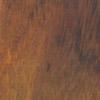 ORELHA DE MACACO
ORELHA DE MACACO
NOME CIENTÍFICO
Enterolobium schomburgkii
OUTROS NOMES POPULARES
Cambuí-sucupira, fava-bolota, fava-de-rosca, fava-orelha-de-macaco, fava-uingue, fava-wing, faveca, faveira-de-rosca, faveira-dura, faveira-grande, orelha-de-gato, paricarana, timbaúba, timbó-da-mata, timborana.
NOMES INTERNACIONAIS
Batibatra
CARACTERÍSTICAS GERAIS
Cerne castanho amarelado com veios mais escuros;
Cheiro e gosto indistintos;
Densidade alta;
Grã irregular a revessa;
Superfície ligeiramente áspera;
Aspeto fibroso atenuado;
Textura média.
DURABILIDADE NATURAL
A Madeira de fava-orelha-de-macaco é resistente ao ataque de fungos apodrecedores e altamente resistente a cupins. Em ensaios de campo na região amazônica, a madeira de fava-orelha-de-macaco, demostrou ser moderadamente resistente ao ataque de organismos xilófagos.
TRABALHABILIDADE
A Madeira de fava-orelha-de-macaco é fácil de serrar, aplainar, lixar, tornear, furar, pregar e parafusar. Apresenta acabamento médio. A madeira é fácil de faquear, gerando lâminas lisas, compactas, fáceis de secar e com superfície brilhante.
USOS
CONSTRUÇÃO CIVIL
Pesada externa: Dormentes ferroviários, cruzetas
Pesada interna: Vigas, caibros, tesouras
Leve em esquadrias: Batentes e janelas
Leve interna, decorativa: Lambris, painéis, molduras, guarnições, forros
Assoalhos: Tábuas, tacos
Mobiliário
Alta qualidade: Móveis decorativos
OUTROS USOS: Lâminas decorativas, implementos agrícolas, transporte e embalagens.
BOTANICAL NAME
Enterolobium schomburgkii
OTHER NAMES
Cambuí-sucupira, fava-bolota, fava-de-rosca, fava-orelha-de-macaco, fava-uingue, fava-wing, faveca, faveira-de-rosca, faveira-dura, faveira-grande, orelha-de-gato, paricarana, timbaúba, timbó-da-mata, timborana
INTERNATIONAL NAMES
Batibatra
GENERAL CHARACTERISTICS
Heartwood yellowish brown with darker veins;
Indistinct smell and taste;
High density;
Irregular to interlocked grain;
Slightly rough surface;
Attenuated fibrous appearance;
Texture medium.
NATURAL DURABILITY
The orelha de macaco is resistant to decay fungi and highly resistant to termites. In field trials in the Amazon region, has shown to be moderately resistant to attack by wood-destroying organisms.
WORKING PROPERTIES
Is easy to saw, planing, sanding, turning, drilling, nailing and screwing. It has na average finish. Wood is easy to veneer, generating smooth blades, compact, easy to dry and shiny surface.
USES
CONSTRUCTION
External heavy: Railway crossties, crossarms
Internal heavy: Beams, rafters, scissors
Framework: Jambs, window frames and windows
Internal light, decorative: Wall panelling, panels, frames, finishings, ceilings
Flooring: Boards, flooring boards
FURNITURE
High quality: Decorative furniture
OTHER USES: Decorative veneer, agricultural implements, transport and packaging
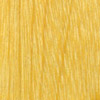 PEQUI
PEQUI
NOME CIENTÍFICO
Caryocar villosum
OUTROS NOMES POPULARES
Pequi-roxo, pequiá, piqui, piqui-rosa, piquiá-bravo, piquiá-verdadeiro.
NOMES INTERNACIONAIS
Abe a beurre (Guiana Francesa), bats souari (Inglaterra), pekea (Inglaterra).
CARACTERÍSTICAS GERAIS
Cerne esbranquiçado, levemente rosado, passando geralmente a amarelo-claro ou também pardo-claro-amarelo;
Cheiro e gosto impercetíveis;
Densidade alta;
Grã revessa;
Textura grossa.
DURABILIDADE NATURAL
A madeira de pequi em ensaios de laboratório demonstrou ter alta resistência ao ataque de organismos xilófagos.
TRABALHABILIDADE
A madeira de pequi é difícil de ser trabalhada, tanto com ferramentas manuais como mecânicas. Produz superfície áspera, depois do aplainado, devido à grã revessa. Bom acabamento em pintura, verniz e polimento.
USOS
CONSTRUÇÃO CIVIL
Pesada externa: Dormentes ferroviários, cruzetas, postes, defensas, mourões
Pesada interna: Vigas, caibros
OUTROS USOS: Embarcações (quilhas, convés, costados e cavernas), tanoaria, embalagens.
BOTANICAL NAME
Caryocar villosum
OTHER NAMES
Pequi-roxo (purple), pequiá, piqui, piqui-rosa (pink), piquiá-bravo (angry), piquiá-verdadeiro (true).
INTERNATIONAL NAMES
Abe a beurre (French Guiana), bats souari (England), pekea (England).
GENERAL CHARACTERISTICS
Heartwood whitish, slightly pink, often through the yellow light or too light brown-yellow;
Smell and taste unnoticeable;
High density;
Interlocked grain;
Rough texture.
NATURAL DURABILITY
The wood in laboratory tests showed a high resistance to attack by wood-destroying organisms.
WORKING PROPERTIES
Wood pequi is difficult to work with both manual and mechanical tools. Produces rought surface, then the flattened due to interlocked grain. Good finish paint, varnish and polish.
USES
CONSTRUCTION
External heavy: Railway crossties, crossarms, poles, fenders, piling
Internal heavy: Beams, rafters
OTHER USES: boatbuilding (keels, decks, topsides and caves), cooperage, packaging.
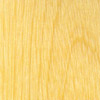 PEQUIARANA
PEQUIARANA
NOME CIENTÍFICO
Caryocar glabrum
OUTROS NOMES POPULARES
Pequiarana-da-terra, pequiarana-vermelha.
NOMES INTERNACIONAIS
Almendro (Peru), bats souari (Guiana), saouri (Guiana Francesa), sawari (Venezuela).
CARACTERÍSTICAS GERAIS
Cerne esbranquiçado-avermelhado, quando recém cortado, passando a esbranquiçado levemente amarelado;
Cheiro e gosto impercetíveis;
Densidade alta;
Grã revessa;
Textura grossa.
DURABILIDADE NATURAL
A madeira em ensaios de laboratório demonstrou ter alta resistência ao ataque de organismos xilófagos.
TRABALHABILIDADE
A madeira de pequiarana é difícil de ser trabalhada, tanto com ferramentas manuais como mecânicas. Produz superfície áspera, depois do aplainado, devido à grã revessa. Bom acabamento em pintura, verniz e polimento.
USOS
CONSTRUÇÃO CIVIL
Pesada externa: Dormentes ferroviários, cruzetas, postes, defensas, estacas, mourões
Pesada interna: Vigas, caibros
OUTROS USOS: Embarcações (quilhas, convés, costados e cavernas), tanoaria e embalagens.
BOTANICAL NAME
Caryocar glabrum
OTHER NAMES
Pequiarana-da-terra, pequiarana-vermelha (red).
INTERNATIONAL NAMES
Almendro (Peru), bats souari (Guyana), saouri (French Guiana), sawari (Venezuela).
GENERAL CHARACTERISTICS
Whitish-red heartwood, when freshly cut, becoming whitish slightly yellowish;
Smell and taste unnoticeable;
High density;
Interlocked grain;
Rough texture.
NATURAL DURABILITY
The wood in laboratory tests showed a high resistance to attack by wood-destroying organisms.
WORKING PROPERTIES
Wood pequiarana is difficult to work with both manual and mechanical tools. Produces rought surface, then the flattened due to interlocked grain. Good finish paint, varnish and polish.
USES
CONSTRUCTION
External heavy: Railway crossties, crossarms, poles, fenders, piling
Internal heavy: Beams, rafters
OTHER USES: boatbuildings (keels, decks, topsides and caves), cooperage and packaging.
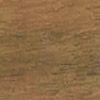 QUARUBA
QUARUBA
NOME CIENTÍFICO
Vochysia spp.
OUTROS NOMES POPULARES
Guaruba, guaruba-cedro, quaruba-cedro, quaruba-goiaba, quaruba-verdadeira, quaruba-vermelha.
NOMES INTERNACIONAIS
Barba chele, iteballi (Guiana), kouali (Guiana Francesa), kwarie, quaruba, wanekwalie (Suriname), yemeri (Nicarágua).
CARACTERÍSTICAS GERAIS
Cerne e alburno pouco distintos pela cor, cerne rosado e alburno cinza-claro a cinza-rosado;
Brilho moderado ou ausente;
Cheiro e gosto impercetíveis;
Densidade baixa;
Macia ao corte;
Grã revessa;
Textura média a grossa.
DURABILIDADE NATURAL
A resistência da madeira ao apodrecimento varia conforme a espécie. Com relação ao ataque de cupins e fungos, geralmente as madeiras desse gênero são suscetíveis a moderadamente resistentes ao ataque de cupins-de-madeira-seca. A espécie V. Guianensis é considerada moderadamente resistente ao ataque de cupins, entretanto, pode apresentar uma baixa resistência ao ataque de perfuradores marinhos. O alburno pode ser suscetível ao ataque de brocas do gênero Lyctus. Em ensaio de campo, com a madeira em contato com o solo, a espécie V. Guianensis foi considerada moderadamente durável, com vida útil entre 2 e 5 anos, e a espécie V. Maxima foi considerada não durável, com vida útil inferior a 2 anos.
TRABALHABILIDADE
A madeira de quaruba é fácil de ser trabalhada tanto com ferramentas manuais como com máquinas. Alguns defeitos comuns são a superfície felpuda e fibras arrancadas. A colagem e a aplicação de tintas e vernizes não apresentam problemas. O polimento é bom. É fácil de aplainar, lixar, tornear e furar, podendo apresentar, entretanto, acabamento ruim.
USOS
CONSTRUÇÃO CIVIL
Leve interna, estrutural: Ripas, partes secundárias de estruturas
Leve interna, utilidade geral: Cordões, guarnições, rodapés, forros, lambris
Uso temporário: Fôrmas para concreto, pontaletes
Mobiliário
Utilidade geral: Móveis estândar, partes internas de móveis inclusive daqueles decorativos
OUTROS USOS: Molduras para quadros, peças torneadas, embarcações, chapas compensadas, lâminas decorativas, artigos de desporto e brinquedos, embalagens, palitos, bobinas, carretéis.
BOTANICAL NAME
Vochysia spp.
OTHER NAMES
Guaruba, guaruba-cedro, quaruba-cedro, quaruba-goiaba, quaruba-verdadeira (true), quaruba-vermelha (red).
INTERNATIONAL NAMES
Barba chele, iteballi (Guyana), kouali (French Guiana), kwarie, quaruba (international), wanekwalie (Surinam), yemeri (Nicaragua).
GENERAL CHARACTERISTICS
Heartwood and sapwood distinct in color, heartwood rosy, sapwood light gray to rosy gray;
Absent or little luster;
Smell and taste unnoticeable;
Low density;
Soft to cut;
Interlocked grain;
Medium to rough texture.
NATURAL DURABILITY
The resistance of quaruba to decay varies with the species. Resistance to termites and fungi is low to moderate. V. Guianensis is moderately resistant to the attack of termites but not to marine borers. The sapwood is susceptible to wood borers (Lyctus). In field tests, V. Guianensis showed moderate resistance to fungi and insects, with a service life of 2 to 5 years and V. Maxima was considered not durable, with life less than 2 years.
WORKING PROPERTIES
Quaruba wood is easy to work by both machines and hand tools. Some common defects are the downy surface and torn fibers. The bonding and the application of paints and varnishes have no problems. Polishing is good. It is easy to planing, sanding, turning and boring, but finishing may be poor.
USES
CONSTRUCTION
Internal light, structural: Laths, secondary parts of structures
Internal light, general utility: Finishings, trimmings, skirting boards, ceilings, wall panelling
Temporary use: Concrete forms, posts and braces.
FURNITURE
General utility: Standard furniture, concealed parts of furniture including decorative
OTHER USES: Picture framing, turned parts, boatbuildings, plywood, decorative veneer, sports goods and toys, packaging, toothpicks, reels, spools
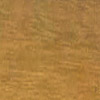 QUARUBA BRANCA
QUARUBA BRANCA
NOME CIENTÍFICO
Ruizterania albiflora
OUTROS NOMES POPULARES
Canela-mandioca, madioqueiro, mandioqueira-áspera, mandioqueira-escamosa, mandioqueira-lisa, mandioqueira-vermelha.
NOMES INTERNACIONAIS
Gronfolo gris, mandio.
CARACTERÍSTICAS GERAIS
Cerne e alburno pouco distintos pela cor, cerne bege-claro levemente rosado a avermelhado;
Brilho moderado;
Cheiro e gosto impercetíveis;
Densidade média;
Moderadamente dura ao corte;
Grã revessa;
Textura média (aspeto fibroso).
DURABILIDADE NATURAL
A madeira de mandioqueira apresenta baixa resistência ao ataque de organismos xilófagos. Apresenta resistência moderada ao ataque de cupins-de-madeira-seca. Esta madeira é considerada moderadamente suscetível ao ataque de térmitas e suscetível aos perfuradores marinhos.
TRABALHABILIDADE
A madeira de mandioqueira é moderadamente dura ao corte, com ferramentas manuais ou mecânicas, devido à presença de sílica nas células do raio. Apresenta um bom acabamento, boa colagem e é fácil de tornear, porém com tendência para apresentar superfície felpuda.
USOS
CONSTRUÇÃO CIVIL
Leve interna, estrutural: Ripas, partes secundárias de estruturas
Leve interna, utilidade geral: Forros, guarnições, cordões, rodapés
Uso temporário: Pontaletes, andaimes, fôrmas para concreto
Mobiliário
Utilidade geral: Móveis estândar, partes internas de móveis inclusive daqueles decorativos
OUTROS USOS: Chapas compensadas, embalagens.
BOTANICAL NAME
Ruizterania albiflora
OTHER NAMES
Canela-mandioca, madioqueiro, mandioqueira-áspera, mandioqueira-escamosa, mandioqueira-lisa, mandioqueira-vermelha (red).
INTERNATIONAL NAMES
Gronfolo gris, mandio.
GENERAL CHARACTERISTICS
Heartwood and sapwood little different by color, heartwood light beige slighty pink to reddish;
Moderate brightness;
Smell and taste unnoticeable;
Medium density;
Moderately hard to cut;
Interlocked grain;
Medium texture (fibrous appearance).
NATURAL DURABILITY
Wood mandioqueira has low resistance to attack by wood-destroying organisms. It is moderately resistant to termites wood-dried. This wood is considered moderately susceptible to termites attack and susceptible to marine borers.
WORKING PROPERTIES
The timber mandioqueira is moderately hard to cut with hand or power tools, due to the presence of silica in the ray cells. Presents a good finish, good bonding and is easy to circumvent, but with a tendency to present downy surface.
USES
CONSTRUCTION
Internal light, structural: Laths, secondary parts of structures
Internal light, general utility: Ceilings, trimmings, finishings, skirting boards
Temporary use: Posts and braces, scaffolding, concrete forms
FURNITURE
General utility: Standard furniture, concealed parts of furniture including decorative
OTHER USES: Plywood, packaging.
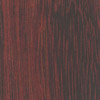 ROXÃO
ROXÃO
NOME CIENTÍFICO
Peltogyne paniculata
OUTROS NOMES POPULARES
Amarante, coataquiçaua, pau-roxo-da-terra-firme, pau-roxo-da-várzea, roxinho, roxinho-pororoca, violeta.
NOMES INTERNACIONAIS
Amarante, bois violet (Guiana Francesa), purper hart (Suriname), purpleheart, violet holz (Alemanha).
CARACTERÍSTICAS GERAIS
Cerne e alburno distintos pela cor, cerne roxo podendo escurecer com o tempo, alburno bege claro;
Brilho moderado a acentuado;
Cheiro e gosto impercetíveis;
Densidade alta;
Dura ao corte;
Grã direita a irregular;
Textura fina a média.
DURABILIDADE NATURAL
A madeira de pau-roxo é considerada de alta resistência ao ataque de organismos xilófagos (fungos apodrecedores e cupins-de-madeira-seca). Apresenta baixa resistência a organismos xilófagos marinhos.
TRABALHABILIDADE
A madeira de pau-roxo é moderadamente difícil de ser trabalhada manualmente ou com máquinas, devido à dureza e exsudação de resina quando aquecida pelas ferramentas. É fácil de colar e apresenta bom acabamento. A trabalhabilidade é regular na plaina e excelente na lixa, torno e broca; apresenta um polimento lustroso. Recomenda-se a perfuração prévia à colocação de pregos.
USOS
CONSTRUÇÃO CIVIL
Pesada externa: Dormentes ferroviários, cruzetas, esteios, estacas
Pesada interna: Tesouras, vigas, caibros
Leve em esquadrias: Portas, janelas, batentes
Leve interna, decorativa: Painéis, forros, lambris
Assoalhos: Tábuas, tacos, parquetes
Mobiliário
Alta qualidade: Móveis decorativos
OUTROS USOS: Embarcações, lâminas decorativas, cabos de ferramentas, cabos para cutelaria, transporte, decoração e adorno, peças torneadas, tacos de bilhar.
BOTANICAL NAME
Peltogyne paniculata
OTHER NAMES
Amarante, coataquiçaua, pau-roxo-da-terra-firme, pau-roxo-da-várzea, roxinho, roxinho-pororoca, violeta.
INTERNATIONAL NAMES
Amarante, bois violet (French guiana), purper hart (Surinam), purpleheart, violet holz (Germany).
GENERAL CHARACTERISTICS
Heartwood and sapwood little distinct in color, purple heartwood may darken with time, sapwood light beige;
Luster moderate to severe;
Smell and taste unnoticeable;
High density;
Hard to cut;
Grain straight to irregular;
Fine to medium texture.
NATURAL DURABILITY
Roxão is considered high resistance to attack by wood-destroying organisms (decay fungi and termites-of-wood-dry). It has low resistance to xylophagous marine organisms.
WORKING PROPERTIES
The roxão wood is moderately difficult to work manually or with machines, due to the hardness and oozing resin when heated by tools. It is easy to paste and has a good finish. Working properties is regular in planing and excelente in sanding, lathe and drill; it features a lustrous polish. It is recommended to pre-drill the placement of nails.
USES
CONSTRUCTION
External heavy: Railway crossties, crossarms, spars, piling
Internal heavy: Scissors, beams, rafters
Framework: Doors, windows and windows frames, jambs
Internal light, decorative: Panels, ceilings, wall panelling
Floors: Boards, flooring boards, parquets
FURNITURE
High quality: Decorative furniture
OTHER USES: Boatbuildings, decorative veneer, tool handles, cutlery cables, transport, decoration and adornment, turned parts, billiard cues.
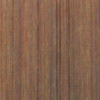 ROXINHO
ROXINHO
NOME CIENTÍFICO
Peltogyne lecointei
OUTROS NOMES POPULARES
Amarante, coataquiçaua, pau-roxo-da-terra-firme, pau-roxo-da-várzea, roxinho-pororoca, violeta.
NOMES INTERNACIONAIS
Amarante, bois violet (Guiana Francesa), purper hart (Suriname), purpleheart, violet holz (Alemanha).
CARACTERÍSTICAS GERAIS
Cerne e alburno distintos pela cor, cerne roxo podendo escurecer com o tempo, alburno bege claro;
Brilho moderado a acentuado;
Cheiro e gosto impercetíveis;
Densidade alta;
Dura ao corte;
Grã direita a irregular;
Textura fina a média.
DURABILIDADE NATURAL
A madeira de pau-roxo é considerada de alta resistência ao ataque de organismos xilófagos (fungos apodrecedores e cupins-de-madeira-seca). Apresenta baixa resistência a organismos xilófagos marinhos.
TRABALHABILIDADE
A madeira de pau-roxo é moderadamente difícil de ser trabalhada manualmente ou com máquinas, devido à dureza e exsudação de resina quando aquecida pelas ferramentas. É fácil de colar e apresenta bom acabamento. A trabalhabilidade é regular na plaina e excelente na lixa, torno e broca; apresenta um polimento lustroso. Recomenda-se a perfuração prévia à colocação de pregos.
USOS
CONSTRUÇÃO CIVIL
Pesada externa: Dormentes ferroviários, cruzetas, esteios e estacas
Pesada interna: Tesouras, vigas, caibros
Leve em esquadrias: Portas, janelas, batentes
Leve interna, decorativa: Painéis, forros, lambris
Assoalhos: Tábuas, tacos, parquetes
Mobiliário
Alta qualidade: Móveis decorativos
OUTROS USOS: Embarcações, lâminas decorativas, cabos de ferramentas, cabos para cutelaria, transporte, decoração e adorno, peças torneadas, tacos de bilhar.
BOTANICAL NAME
Peltogyne lecointei
OTHER NAMES
Amarante, coataquiçaua, pau-roxo-da-terra-firme, pau-roxo-da-várzea, roxinho-pororoca, violeta.
INTERNATIONAL NAMES
Amarante, bois violet (French Guiana), purper hart (Surinam), purpleheart, violet holz (Germany).
GENERAL CHARACTERISTICS
Heartwood and sapwood little distinct in color, purple heartwood may darken with time, sapwood light beige;
Luster moderate to severe;
Smell and taste unnoticeable;
High density;
Hard to cut;
Grain straight to irregular;
Fine to medium texture.
NATURAL DURABILITY
Roxão is considered high resistance to attack by wood-destroying organisms (decay fungi and termites-of-wood-dry). It has low resistance to xylophagous marine organisms.
WORKING PROPERTIES
The roxão wood is moderately difficult to work manually or with machines, due to the hardness and oozing resin when heated by tools. It is easy to paste and has a good finish. Working properties is regular in plane and excelente in sanding, lathe and drill; it features a lustrous polish. It is recommended to pre-drill the placement of nails.
USES
CONSTRUCTION
External heavy: Railway crossties, crossarms, spars, piling
Internal heavy: Scissors, beams, rafters
Framework: Doors, windows and windows frames, jambs
Internal light, decorative: Panels, ceilings, wall panelling
Floors: Boards, flooring boards, parquets
FURNITURE
High quality: Decorative furniture
OTHER USES: Boatbuildings, decorative veneer, tool handles, cutlery cables, transport, decoration and adornment, turned parts, billiard cues.
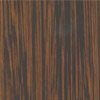 SUCUPIRA PELE DE SAPO/SUCUPIRA AMARELA
SUCUPIRA PELE DE SAPO/SUCUPIRA AMARELA
NOME CIENTÍFICO
Diplotropis purpúrea
OUTROS NOMES POPULARES
Cutiúba, macanaíba, macanaíba-pele-de-sapo, sapupira, sapupira-da-mata, sapupira-parda, sebepira, sucupira-açu, sucupira-da-terra-firme, sucupira-da-várzea, sucupira-do-igapó, sucupira-marreta, sucupira-parda, sucupira-preta, sucupira-roxa.
NOMES INTERNACIONAIS
Coeur de hors, sapupira, sucupira (Internacional), tatabu, zwarte-kabbes (Suriname).
CARACTERÍSTICAS GERAIS
Cerne e alburno distintos pela cor, cerne pardo-escuro-acastanhado;
Aspeto fibroso;
Brilho ausente;
Cheiro e gosto impercetíveis;
Densidade alta;
Dura ao corte;
Grã irregular a revessa;
Textura grossa.
DURABILIDADE NATURAL
A madeira de sucupira, em ensaio de laboratório, demonstrou ser resistente ao ataque de organismos xilófagos (fungos e cupins). A espécie Diplotropis purpurea é considerada resistente aos cupins e suscetível ao ataque de perfuradores marinhos. O alburno não é resistente ao ataque de brocas-de-madeira do gênero Lyctus. Em ensaio de campo, com a madeira em contato com o solo, esta madeira apresentou vida superior a 15 anos.
TRABALHABILIDADE
A madeira de sucupira é moderadamente difícil de ser trabalhada. É difícil de aplainar, devido à grã revessa. Fácil de tornear apresentando bom acabamento. Elevada capacidade de retenção de parafusos, é recomendada a perfuração prévia na aplicação de pregos.
USOS
CONSTRUÇÃO CIVIL
Pesada externa: Dormentes ferroviários, cruzetas, estacas, pontes
Pesada interna: Tesouras, vigas, caibros
Leve em esquadrias: Batentes, janelas
Leve interna, decorativa: Painéis, lambris, forros
Assoalhos: Tábuas, tacos, parquetes
Mobiliário
Alta qualidade: Móveis decorativos
OUTROS USOS: Lâminas decorativas, decoração e adorno, peças torneadas, embarcações, cabos de ferramentas, cabos para cutelaria
BOTANICAL NAME
Diplotropis purpúrea
OTHER NAMES
Cutiúba, macanaíba, macanaíba-pele-de-sapo, sapupira, sapupira-da-mata, sapupira-parda, sebepira, sucupira-açu, sucupira-da-terra-firme, sucupira-da-várzea, sucupira-do-igapó, sucupira-marreta, sucupira-parda, sucupira-preta, sucupira-roxa.
INTERNATIONAL NAMES
Coeur de hors, sapupira, sucupira (International), tatabu, zwarte-kabbes (Surinam).
GENERAL CHARACTERISTICS
Heartwood and sapwood distinct in color, reddish dark brown heartwood;
Fibrous appearance;
Luster absent;
Smell and taste unnoticeable;
High density;
Hard to cut;
Irregular to interlocked grain;
Rough texture.
NATURAL DURABILITY
In laboratory tests sucupira showed to be resistant to the attack of both fungi and termites. The specie Diplotropis purpurea is considered resistant to termites and susceptible the attack marine borers. The sapwood is susceptible to attack by Lyctus borers. In field test the wood showed service life above 15 years.
WORKING PROPERTIES
Sucupira is moderately difficult to work. I tis difficult to plane due to its irregular grain but turns easily with good finish. Preboring is advised to nailing but good results are obtained with screws.
USES
CONSTRUCTION
External heavy: Railway crossties, crossarms, piling, bridge building
Internal heavy: Scissors, beams, rafters
Framework: Posts and jambs, windows
Internal light, decorative: Panels, wall panelling, ceilings
Floors: Boards, flooring boards, parquets
FURNITURE
High quality: Decorative furniture
OTHER USES: Decorative veneer, decoration and adornment, turned parts, boatbuildings, tool handles, cutlery cables.
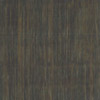 SUCUPIRA PRETA
SUCUPIRA PRETA
NOME CIENTÍFICO
Diplotropis martiusii
OUTROS NOMES POPULARES
Cutiúba, macanaíba, macanaíba-pele-de-sapo, sapupira, sapupira-da-mata, sapupira-parda, sebepira, sucupira-açu, sucupira-da-terra-firme, sucupira-da-várzea, sucupira-do-igapó, sucupira-marreta, sucupira-parda, sucupira-roxa.
NOMES INTERNACIONAIS
Coeur de hors, sapupira, sucupira (Internacional), tatabu, zwarte-kabbes (Suriname).
CARACTERÍSTICAS GERAIS
Cerne e alburno distintos pela cor, cerne pardo-escuro-acastanhado;
Aspeto fibroso;
Brilho ausente;
Cheiro e gosto impercetíveis;
Densidade alta;
Dura ao corte;
Grã irregular a revessa;
Textura grossa.
DURABILIDADE NATURAL
A madeira de sucupira, em ensaio de laboratório, demonstrou ser resistente ao ataque de organismos xilófagos (fungos e cupins). A espécie Diplotropis purpurea é considerada resistente aos cupins e suscetível ao ataque de perfuradores marinhos. O alburno não é resistente ao ataque de brocas-de-madeira do gênero Lyctus. Em ensaio de campo, com a madeira em contato com o solo, esta madeira apresentou vida superior a 15 anos.
TRABALHABILIDADE
A madeira de sucupira é moderadamente difícil de ser trabalhada. É difícil de aplainar, devido à grã revessa. Fácil de tornear apresentando bom acabamento. Elevada capacidade de retenção de parafusos, é recomendada a perfuração prévia na aplicação de pregos.
USOS
CONSTRUÇÃO CIVIL
Pesada externa: Dormentes ferroviários, cruzetas, estacas, pontes
Pesada interna: Tesouras, vigas, caibros
Leve em esquadrias: Batentes, janelas
Leve interna, decorativa: Painéis, lambris, forros
Assoalhos: Tábuas, tacos, parquetes
Mobiliário
Alta qualidade: Móveis decorativos
OUTROS USOS: Lâminas decorativas, decoração e adorno, peças torneadas, embarcações, cabos de ferramentas, cabos para cutelaria
BOTANICAL NAME
Diplotropis martiusii
OTHER NAMES
Cutiúba, macanaíba, macanaíba-pele-de-sapo, sapupira, sapupira-da-mata, sapupira-parda, sebepira, sucupira-açu, sucupira-da-terra-firme, sucupira-da-várzea, sucupira-do-igapó, sucupira-marreta, sucupira-parda, sucupira-roxa.
INTERNATIONAL NAMES
Coeur de hors, sapupira, sucupira (International), tatabu, zwarte-kabbes (Surinam).
GENERAL CHARACTERISTICS
Heartwood and sapwood distinct in color, reddish dark brown heartwood;
Fibrous appearance;
Luster absent;
Smell and taste unnoticeable;
High density;
Hard to cut;
Irregular to interlocked grain;
Rough texture.
NATURAL DURABILITY
In laboratory tests sucupira showed to be resistant to the attack of both fungi and termites. The specie Diplotropis purpurea is considered resistant to termites and susceptible the attack marine borers. The sapwood is susceptible to attack by Lyctus borers. In field test the wood showed service life above 15 years.
WORKING PROPERTIES
Sucupira is moderately difficult to work. I tis difficult to plane due to its irregular grain but turns easily with good finish. Preboring is advised to nailing but good results are obtained with screws.
USES
CONSTRUCTION
External heavy: Railway crossties, crossarms, piling, bridge building
Internal heavy: Scissors, beams, rafters
Framework: Posts and jambs, windows
Internal light, decorative: Panels, wall panelling, ceilings
Floors: Boards, flooring boards, parquets
FURNITURE
High quality: Decorative furniture
OTHER USES: Decorative veneer, decoration and adornment, turned parts, boatbuilding, tool handles, cutlery cables.
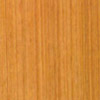 TAUARI
TAUARI
NOME CIENTÍFICO
Couratari guianensis
OUTROS NOMES POPULARES
Estopeiro, imbirema, tauari-amarelo, tauari-morrão.
NOMES INTERNACIONAIS
Couratari, ingipipa (Suriname), ingipipa (Guiana Francesa), mahot cigar, tauari, wadara (Guiana), wandara.
CARACTERÍSTICAS GERAIS
Cerne e alburno indistintos pela cor, branco-amarelado a bege-amarelado-claro;
Brilho moderado;
Cheiro variável de pouco percetível a percetível, neste caso, desagradável, gosto levemente amargo;
Densidade média;
Macia ao corte;
Grã direita;
Textura média.
DURABILIDADE NATURAL
Apresenta baixa resistência ao ataque de organismos xilófagos (fungos e cupins). Algumas espécies apresentam tendência a manchar (mancha azul), ocasionada por fungos manchadores, devendo ser utilizadas secas e protegidas da humidade. Em ensaio de campo, com a madeira em contato com o solo, esta madeira foi considerada como não durável, com vida inferior a dois anos.
TRABALHABILIDADE
A madeira de tauari é moderadamente macia ao corte, apresentando um bom acabamento, apesar de às vezes a superfície ficar com aparência felpuda. Algumas espécies possuem sílica, o que contribui para desgastar as ferramentas.
USOS
CONSTRUÇÃO CIVIL
Leve em esquadrias: Portas, janelas
Leve interna, estrutural: Ripas, partes secundárias de estruturas
Leve interna, utilidade geral: Cordões, guarnições, rodapés, forros, lambris
Mobiliário
Utilidade geral: Móveis estândar, estruturas de móveis e partes internas de móveis inclusive daqueles decorativos
OUTROS USOS: Lâminas decorativas, chapas compensadas, embalagens, peças encurvadas ou curvadas, cabos de vassoura, artigos de desporto e brinquedos, decoração e adorno, instrumentos musicais ou partes deles, lápis, palitos, bobinas, carretéis.
BOTANICAL NAME
Couratari guianensis
OTHER NAMES
Estopeiro, imbirema, tauari-amarelo, tauari-morrão.
INTERNATIONAL NAMES
Couratari, ingipipa (Surinam), ingipipa (French guiana), mahot cigar, tauari, wadara (Guyana), wandara.
GENERAL CHARACTERISTICS
Heartwood and sapwood indistinct in color, yellowish white to light yellowish beige;
Medium luster;
Imperceptible to slighty perceptible odor, unpleasant, slightly bitter taste;
Medium density;
Straight grain;
Medium texture;
NATURAL DURABILITY
Low resistance to the attack of decay fungi and insects. Some species have a tendency to stain (blue spot) caused by staining fungi, and should be used dry and protected from humidity. In the field test, with the wood in contact with the soil, this wood was considered as non-durable, with a life of less than two years.
WORKING PROPERTIES
Tauari wood is relatively easy to cut, with good finish, although surface may turn woolly. Some species have sílica, what contributes to wearing the tools.
USES
CONSTRUCTION
Framework: Doors, windows
Internal light, structural: Laths, secondary parts of structures
Internal light, general utility: Finishings, trimmings, skirting boards, ceilings, wall panelling
FURNITURE
General utility: Standard furniture, structures of furniture and concealed parts of furniture including decorative
OTHER USES: Decorative veneer, plywood, packaging, bent or curved parts, broom cables, sports goods and toys, decoration and adornment, musical instruments or parts/pieces, peneils, toothpicks, reels, spools.
 TAXI
TAXI
NOME CIENTÍFICO
Tachigali paniculata
OUTROS NOMES POPULARES
Tachizeiro, taxi-preto.
NOMES INTERNACIONAIS
Black tachi
CARACTERÍSTICAS GERAIS
Cerne e alburno distintos pela cor, cerne amarelado a castanho-amarelado-claro;
Cheiro e gosto impercetíveis;
Densidade média;
Grã revessa;
Textura média.
DURABILIDADE NATURAL
A madeira de taxi é considerada moderadamente resistente ao ataque de fungos.
TRABALHABILIDADE
A madeira de taxi é considerada moderadamente difícil de serrar e difícil de aplainar. O trabalho com brocas é fácil e de bom acabamento.
USOS
CONSTRUÇÃO CIVIL
Leve interna, estrutural: Ripas
Leve interna, utilidade geral: Cordões, forros, guarnições, molduras
Mobiliário
Utilidade geral: Partes internas de móveis inclusive daqueles decorativos
OUTROS USOS: Embalagens, chapas compensadas, lâminas de utilidade geral, embarcações, artigos de desporto e brinquedos.
BOTANICAL NAME
Tachigali paniculata
OTHER NAMES
Tachizeiro, taxi-preto (black).
INTERNATIONAL NAMES
Black tachi
GENERAL CHARACTERISTICS
Heartwood and sapwood distinct in color, yellowish to yellowish-light-brown heartwood;
Smell and taste unnoticiable
Medium density;
Interlocked grain;
Medium texture;
NATURAL DURABILITY
Tachi wood is considered to be moderately resistant to decay fungi.
WORKING PROPERTIES
Tachi wood is moderately difficult to saw and difficult to plane. The work with drills is easy and of good finish.
USES
CONSTRUCTION
Internal light, structural: Laths
Internal light, general utility: Finishings, ceilings, trimmings, moldings
FURNITURE
General utility: concealed parts of furniture including decorative
OTHER USES: Packaging, plywood, general utility venner, boatbuildings, sports goods and toys.
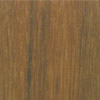 UXI
UXI
NOME CIENTÍFICO
Endopleura uchi
OUTROS NOMES POPULARES
Axuá, cumatê, paruru, uxi-liso.
NOMES INTERNACIONAIS
Não disponível.
CARACTERÍSTICAS GERAIS
Cerne e alburno pouco distintos, cerne castanho-avermelhado;
Cheiro e gosto impercetíveis;
Densidade alta;
Grã direita;
Textura média.
DURABILIDADE NATURAL
Moderada resistência ao ataque de fungos.
TRABALHABILIDADE
A madeira de uxi é considerada de trabalhabilidade regular operações de aplainamento, lixamento e torneamento.
USOS
CONSTRUÇÃO CIVIL
Pesada externa: Cruzetas, dormentes ferroviários
Pesada interna: Vigas, caibros
OUTROS USOS: Transporte, embarcações (quilhas, convés, costados e cavernas), cabos de ferramentas, embalagens.
BOTANICAL NAME
Endopleura uchi
OTHER NAMES
Axuá, cumatê, paruru, uxi-liso.
INTERNATIONAL NAMES
Not available.
GENERAL CHARACTERISTICS
Heartwood and sapwood little different, reddish-brown heartwood;
Smell and taste unnoticiable;
High density;
Straight grain;
Medium texture.
NATURAL DURABILITY
Moderate resistance to attack fungi.
WORKING PROPERTIES
The wood uxi to working properties is considered to regulate the planing operations, sanding and turning.
USES
CONSTRUCTION
External heavy: Crossarms, railway crossties
Internal heavy: Beams, rafters
OTHER USES: Transport, boatbuilding (keels, decks, topsides and caves), tool handles, packaging.
